What medicine to take for gout. Gout and Diabetes: Understanding the Connection and Effective Management Strategies
How are gout and diabetes related. What factors contribute to both conditions. How can lifestyle changes help manage gout and diabetes simultaneously. What are the most effective treatments for gout in diabetic patients. Why is proper diet crucial for controlling both gout and diabetes.
The Intricate Relationship Between Gout and Diabetes
Gout and diabetes, two seemingly distinct health conditions, share a surprisingly close relationship. Recent studies have unveiled a bidirectional link between these disorders, shedding light on their intertwined nature and shared risk factors. Understanding this connection is crucial for effective management and prevention strategies.
Gout, a form of inflammatory arthritis, occurs when uric acid crystals accumulate in joints, causing sudden and severe pain. Diabetes, particularly type 2, is characterized by the body’s inability to properly use insulin, leading to elevated blood sugar levels. While these conditions may appear unrelated at first glance, research has revealed significant overlaps in their underlying mechanisms and risk factors.
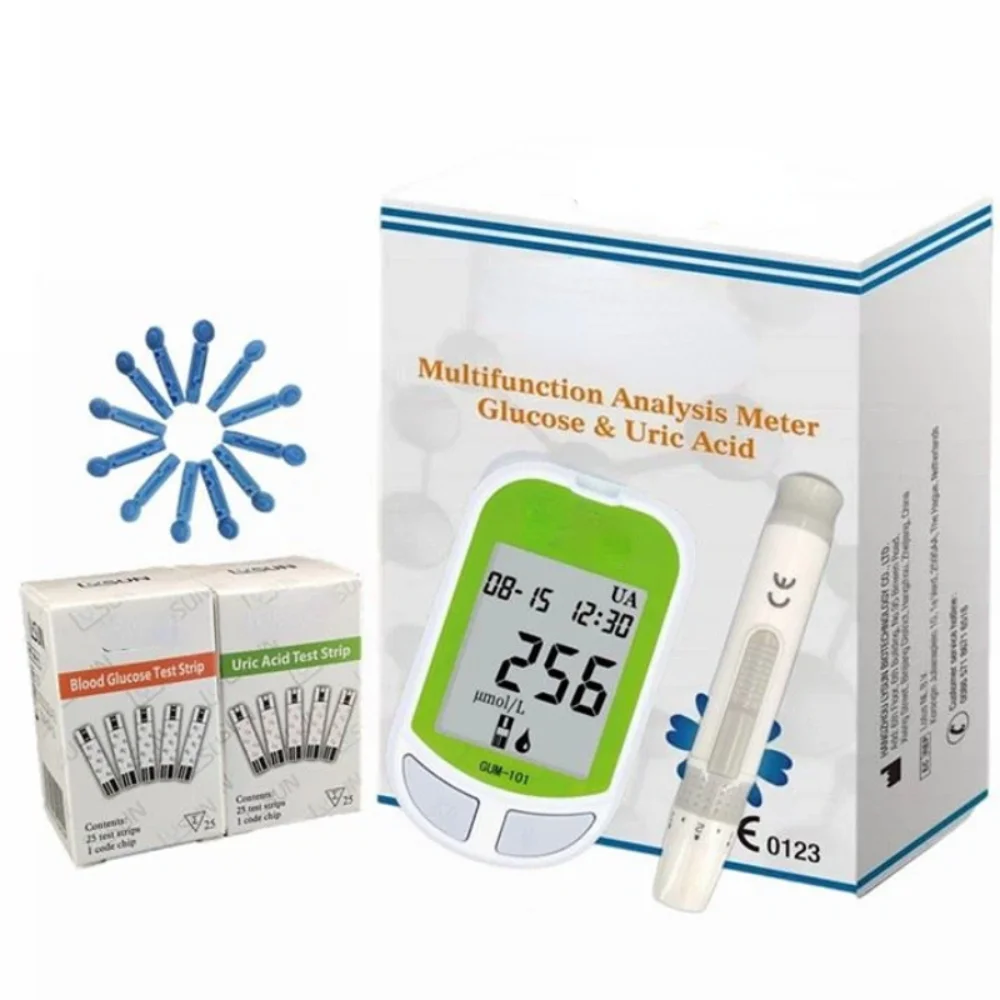
The Bidirectional Link
Studies have shown that individuals with type 2 diabetes have a higher likelihood of developing gout. Conversely, those with gout face an increased risk of diabetes. This bidirectional relationship suggests shared pathophysiological processes and risk factors that contribute to both conditions.
A 2010 study published in The American Journal of Medicine examined thousands of adults and their children, finding that those with higher uric acid levels were more likely to develop type 2 diabetes. Furthermore, a 2014 study in the Annals of the Rheumatic Diseases revealed that the gout-diabetes connection was particularly strong in women, with gout-affected women being 71% more likely to develop diabetes compared to those without gout.
Understanding Hyperuricemia: The Common Thread
Hyperuricemia, a condition characterized by elevated levels of uric acid in the blood, plays a central role in the development of gout and is also closely associated with diabetes. In gout, hyperuricemia leads to the formation of uric acid crystals in joints, triggering painful inflammation. In diabetes, hyperuricemia is often observed as a consequence of insulin resistance and metabolic dysregulation.
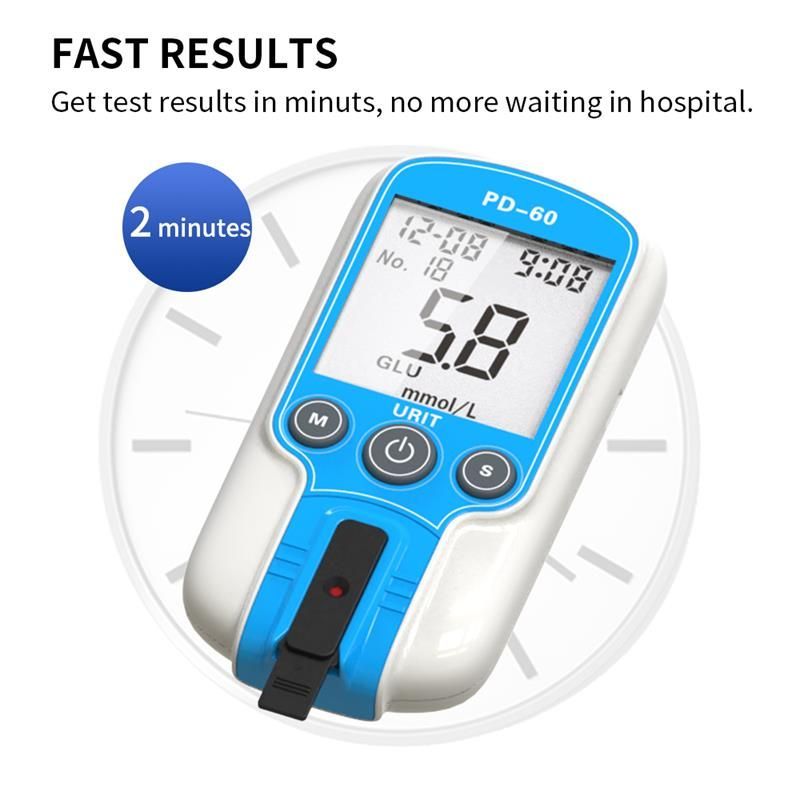
The Role of Insulin Resistance
Insulin resistance, a hallmark of type 2 diabetes, may contribute to the development of gout and hyperuricemia. Studies suggest that insulin resistance can impair the body’s ability to excrete uric acid effectively, leading to its accumulation in the bloodstream. This buildup increases the risk of gout attacks and may exacerbate insulin resistance, creating a vicious cycle.
Why does insulin resistance affect uric acid levels? Insulin plays a role in regulating uric acid excretion in the kidneys. When insulin resistance occurs, this regulatory mechanism is disrupted, potentially leading to increased uric acid retention and hyperuricemia.
Shared Risk Factors: Obesity, Hypertension, and Age
Several risk factors contribute to both gout and diabetes, explaining their frequent co-occurrence and highlighting the importance of addressing these factors for effective prevention and management.
Obesity: A Major Contributor
Obesity significantly increases the risk of both gout and type 2 diabetes. Nearly 90% of individuals with type 2 diabetes are overweight or obese, while obese individuals are four times more likely to develop gout compared to those of normal weight. Excess body weight can impair kidney function, reducing the body’s ability to eliminate uric acid effectively.
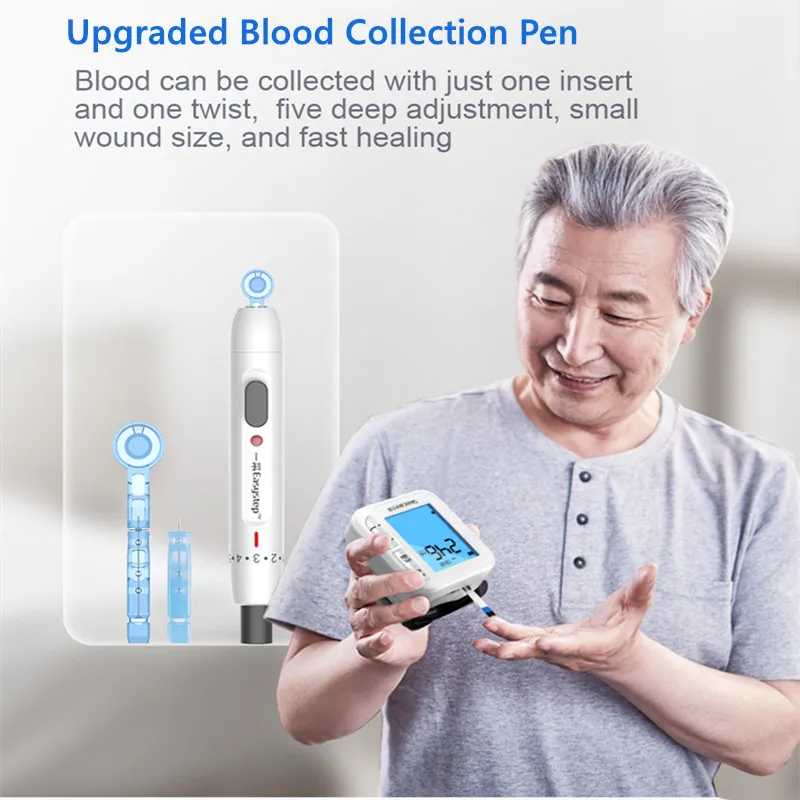
How does obesity impact uric acid levels? Excess adipose tissue produces more uric acid and may also impair its excretion, leading to hyperuricemia and increased gout risk. Additionally, obesity is a primary driver of insulin resistance, directly contributing to the development of type 2 diabetes.
Hypertension: A Common Comorbidity
High blood pressure is frequently observed in individuals with both gout and diabetes. Approximately 80% of people with type 2 diabetes also have hypertension. Elevated blood pressure can contribute to increased uric acid levels and is linked to insulin resistance, further intertwining these conditions.
Age: A Non-Modifiable Risk Factor
Advanced age is associated with an increased risk of both gout and diabetes. Individuals over 45 years old face a higher likelihood of developing these conditions, emphasizing the importance of regular health screenings and preventive measures as we age.
Triggers and Exacerbating Factors for Gout
While gout triggers can vary between individuals, several common factors have been identified that may precipitate gout attacks or exacerbate symptoms, particularly in those with diabetes.
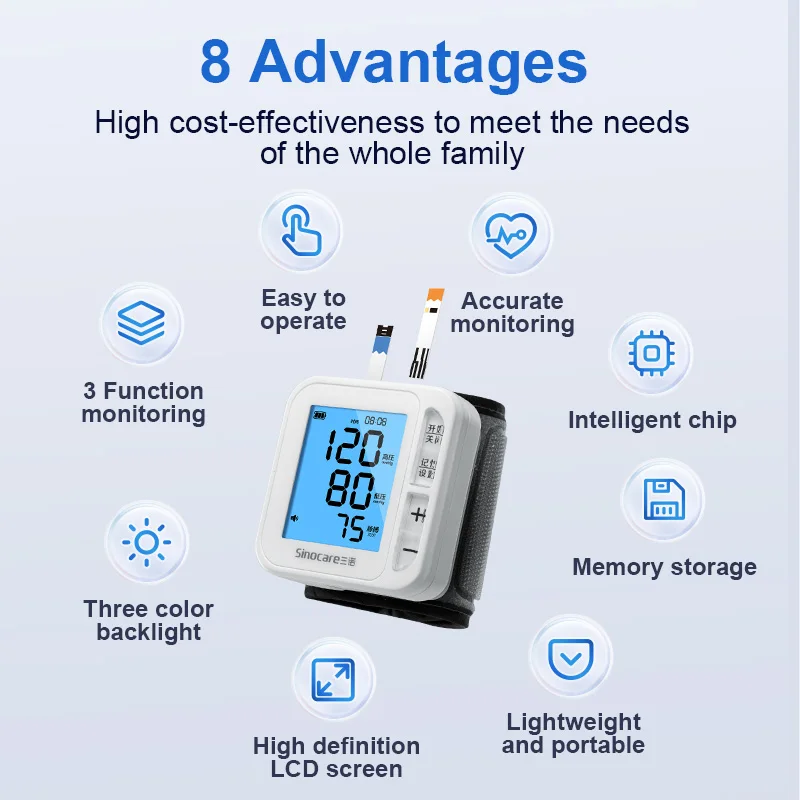
- Heavy alcohol consumption, especially beer and spirits
- Foods high in purines, such as red meat, organ meats, and certain seafood
- Sugary beverages and foods containing fructose
- Certain medications used to treat hypertension or heart failure
- Fasting and dehydration
For individuals managing both gout and diabetes, identifying and avoiding personal triggers is crucial for preventing flare-ups and maintaining overall health.
Effective Treatment Strategies for Gout in Diabetic Patients
Managing gout in individuals with diabetes requires a comprehensive approach that addresses both conditions simultaneously. Treatment strategies often involve a combination of medication and lifestyle modifications.
Medications for Gout Management
Several medications can help manage gout symptoms and prevent future attacks:
- Uricosuric agents: These drugs help the body eliminate more uric acid through urine.
- Xanthine oxidase inhibitors: These medications reduce the body’s production of uric acid.
- Colchicine: An anti-inflammatory drug that can be highly effective when taken at the onset of a gout attack.
- Corticosteroids: These can be taken orally or injected into affected joints to reduce inflammation and pain.
- Nonsteroidal anti-inflammatory drugs (NSAIDs): Medications like ibuprofen and naproxen can help alleviate pain and inflammation during gout flares.
What is the optimal uric acid level for diabetic patients with gout? Doctors typically recommend maintaining a uric acid level at or below 6 mg/dL to reduce the risk of gout attacks in individuals with diabetes.
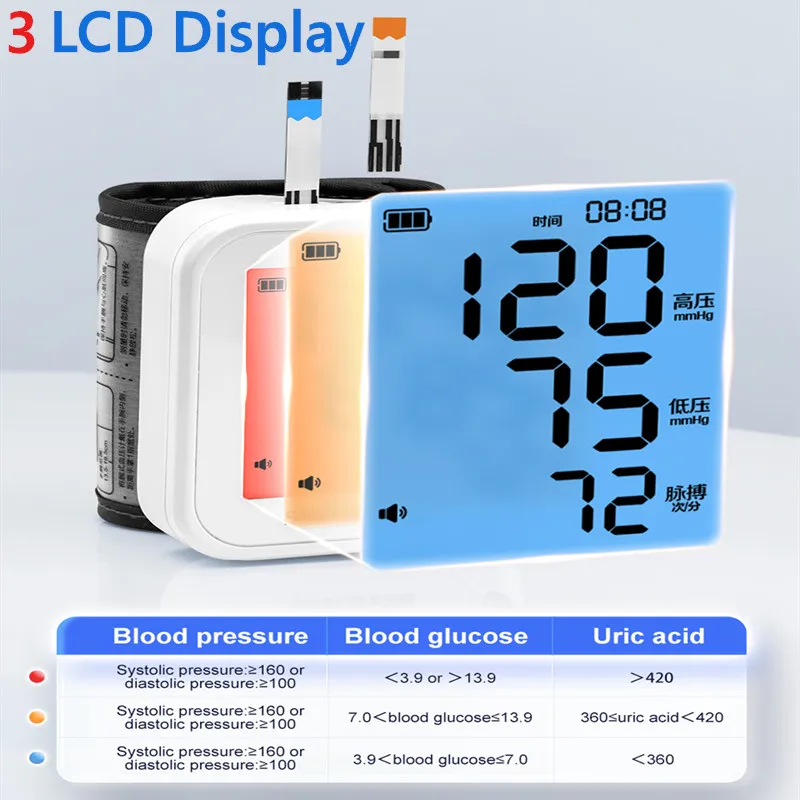
Considerations for Diabetic Patients
When treating gout in diabetic patients, healthcare providers must carefully consider potential drug interactions and effects on blood sugar levels. Some medications used to treat gout may affect glucose metabolism or interact with diabetes medications, necessitating close monitoring and potential dosage adjustments.
Lifestyle Modifications: A Cornerstone of Gout and Diabetes Management
Adopting a healthy lifestyle is crucial for managing both gout and diabetes effectively. These modifications can help control uric acid levels, improve insulin sensitivity, and reduce the risk of complications associated with both conditions.
Dietary Considerations
A well-balanced diet plays a pivotal role in managing gout and diabetes simultaneously. Key dietary recommendations include:
- Limiting high-purine foods such as red meat, organ meats, and certain seafood
- Reducing alcohol consumption, particularly beer and spirits
- Avoiding sugary beverages and foods high in fructose
- Incorporating low-fat dairy products, which may have a protective effect against gout
- Focusing on complex carbohydrates, lean proteins, and healthy fats to maintain stable blood sugar levels
How can diet impact both gout and diabetes management? A balanced diet can help control uric acid production, improve insulin sensitivity, and maintain healthy blood sugar levels, addressing key factors in both conditions.

Regular Physical Activity
Exercise is beneficial for managing both gout and diabetes. Regular physical activity can help:
- Maintain a healthy weight
- Improve insulin sensitivity
- Reduce inflammation
- Lower uric acid levels
It’s important to consult with a healthcare provider before starting a new exercise regimen, especially for individuals with gout, to avoid triggering flare-ups through excessive joint stress.
The Importance of Regular Monitoring and Follow-up
Consistent monitoring of both gout and diabetes is essential for effective management and prevention of complications. Regular check-ups and laboratory tests can help track progress and identify potential issues early.
Key Monitoring Parameters
- Uric acid levels
- Blood glucose levels (HbA1c)
- Kidney function
- Blood pressure
- Body weight
How often should individuals with both gout and diabetes undergo check-ups? The frequency of monitoring may vary based on individual circumstances, but typically, healthcare providers recommend check-ups every 3-6 months or more frequently if needed.
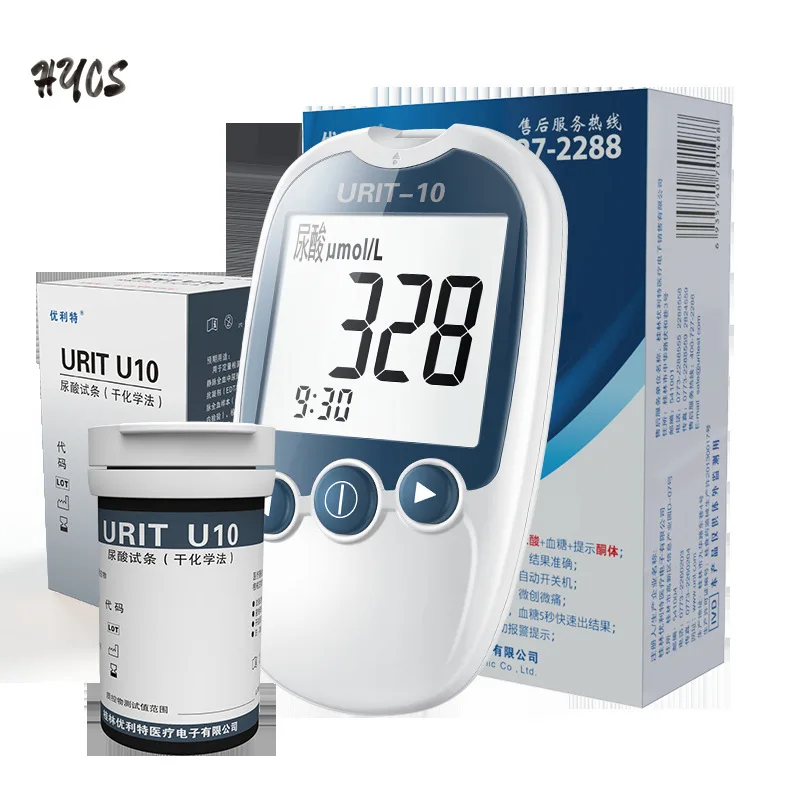
Emerging Research and Future Directions
As our understanding of the relationship between gout and diabetes continues to evolve, ongoing research is exploring new avenues for treatment and prevention. Several areas of investigation show promise for improving outcomes for individuals affected by both conditions.
Novel Therapeutic Approaches
Researchers are investigating new treatments that may address the underlying mechanisms shared by gout and diabetes. These include:
- Dual-action medications that target both uric acid metabolism and glucose regulation
- Inflammatory pathway inhibitors that may benefit both conditions
- Personalized medicine approaches based on genetic and metabolic profiles
Preventive Strategies
Future research aims to develop more effective preventive strategies for individuals at risk of developing both gout and diabetes. This may involve:
- Early identification of high-risk individuals through advanced screening methods
- Development of targeted lifestyle intervention programs
- Investigation of potential protective factors that may reduce the risk of both conditions
What role might genetics play in the development of gout and diabetes? Ongoing genetic studies are exploring the hereditary factors that contribute to both conditions, potentially leading to more personalized prevention and treatment strategies in the future.

As research progresses, the management of gout and diabetes is likely to become increasingly integrated, reflecting the interconnected nature of these conditions. This holistic approach promises to improve outcomes and quality of life for individuals affected by both gout and diabetes.
What Diabetes and Gout Have In Common
If you have type 2 diabetes, your chances of getting gout are higher. And the same is true in reverse. Gout boosts your chance of diabetes.
Gout is a kind of arthritis that causes sudden pain and swelling in your joints. It usually shows up first in the big toe, but it can occur in other joints too. The pain can be intense.
Some things raise your risk for both diabetes and gout, but you can manage many of the causes of these conditions.
What Causes Gout?
Gout usually happens when uric acid builds up in the blood (a condition called hyperuricemia). This acid is a waste that your body makes when it breaks down purines, substances found in your body tissue and some foods. Normally, the acid dissolves in your blood, passes through your kidneys, and leaves when you pee.
If your body makes extra uric acid, or if the kidneys can’t clear enough of it, the levels of the acid in your blood get too high. With time, the acid forms crystals that get stuck in your joints or soft tissue. That’s what causes the painful symptoms.
That’s what causes the painful symptoms.
A first attack of gout may last a week to 10 days. It’s estimated that almost 85% of people who have it once have another episode within 3 years. Gout often runs in families. So if a parent, brother, or sister has it, you might get it too.
The Gout-Diabetes Link
People with type 2 diabetes are more likely to have hyperuricemia, and people with gout and high uric acid may be more likely to get diabetes. Not everyone with hyperuricemia gets gout, but your chances go up as uric acid levels rise.
Type 2 diabetes happens when your body doesn’t use insulin well and sugar stays in the blood instead of moving into cells. This is called insulin resistance. Studies show this may play a role in the development of gout and hyperuricemia and may also make insulin resistance worse.
A 2010 study published in The American Journal of Medicine examined thousands of adults and their children. The researchers found that those with higher uric acid levels were more likely to get type 2 diabetes.:max_bytes(150000):strip_icc()/gout-diet-188117_final-c57366d86df041fcbd5aae339f96f95f.png)
A 2014 study in the Annals of the Rheumatic Diseases found the gout-diabetes connection was especially strong in women. Researchers said that women with gout were 71% more likely to get diabetes than women without it.
There are other factors that play a role in both conditions, too:
Obesity. Almost 90% of people with type 2 diabetes are overweight or obese. People who are obese are four times more likely to get gout than a person of normal weight. Carrying extra pounds slows down your kidneys’ ability to remove uric acid.
Other health conditions. About 80% of people with type 2 diabetes also have high blood pressure. That raises acid levels and is also linked to insulin resistance. Gout and diabetes are linked to kidney damage and heart disease, too.
Age. If you’re older than 45, you have a bigger risk for both.
What Triggers Gout?
Something that causes a flare in one person might not do it in another. But common triggers include:
But common triggers include:
- Heavy alcohol use, especially drinking beer and hard liquor
- Foods high in purines, including red meat, organ meat (like liver), and some seafood, including shellfish
- Sugary sodas and foods with fructose, a type of sugar
- Some drugs used to treat high blood pressure, leg swelling, or heart failure
- Fasting and dehydration
If you think something may trigger gout for you, talk to your doctor about ways to avoid it.
Treatment for Gout
People with diabetes should have a uric acid level at or below 6 mg/dL to reduce the risk. Ask your doctor to test your blood if you don’t know your number.
Your doctor may suggest medication to help you make less uric acid or help your kidneys get rid of more of it.
Treatments may include:
- Uricosuric agents to help your body pass more uric acid
- Xanthine oxidase inhibitors to help your body make less uric acid
If you have a flare of gout, medications can ease pain and swelling.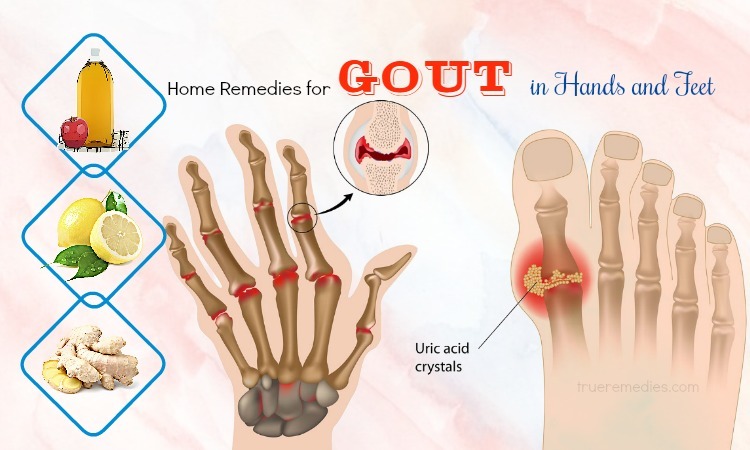 These include:
These include:
Colchicineis a gout medicine that’s most effective if taken right away. Stomach problems are common side effects, but more serious ones can happen too.
Corticosteroids, such as prednisone, are taken by mouth or can be injected into your joint. Another injected drug can help your body make corticosteroids naturally.
Nonsteroidal anti-inflammatory drugs (NSAIDS) include ibuprofen and naproxen. Don’t take aspirin. It can make the pain worse.
Managing Gout and Diabetes
Lifestyle changes can lower uric acid and help control blood sugar.
Watch what you eat. Diet is a key to managing both conditions well. In addition to your diabetes-friendly diet, avoid certain foods and add others.
- Cut out or limit high-purine foods like red meat and seafood, including shrimp, lobster, mussels, anchovies, and sardines.
- Limit or eliminate alcohol to prevent another attack.

- Add dairy products like skim milk and low-fat yogurt, which may protect against gout.
Consider seeing a registered dietitian. They can put together an eating plan that suits your tastes and your needs.
Get moving. Regular exercise helps control blood sugar and can help you lose weight, which can help your body remove excess uric acid. Talk to your doctor about what kinds of activities can benefit both conditions.
Stay hydrated. It’s thought that drinking plenty of water can help flush out uric acid and keep your kidneys working well. A good goal is to down 64 ounces a day, roughly eight glasses. Drink more when you’re exercising.
Control other health problems. High blood pressure, kidney disease, and obesity raise uric acid levels and can bring on a gout flare. Make sure you’re seeing your doctor regularly and following your treatment plan if you have any of these conditions.
Treatments for gout – American Kidney Fund (AKF)
There are medicines that work well for treating gout.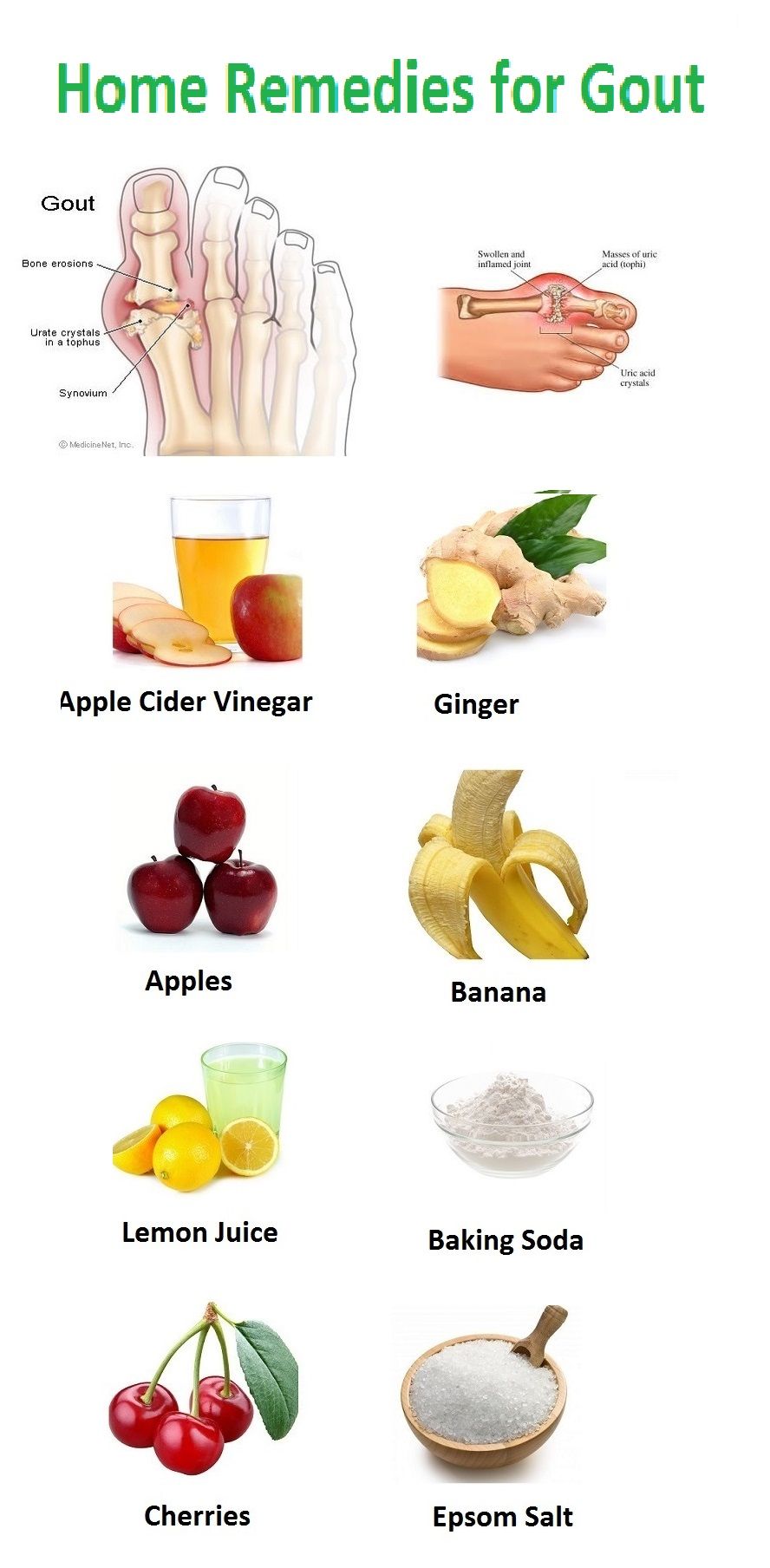 Taking too many medicines or taking certain medicines at the same time can be dangerous, so it is very important to talk to your doctor about how many medicines you can take.
Taking too many medicines or taking certain medicines at the same time can be dangerous, so it is very important to talk to your doctor about how many medicines you can take.
There are two types of medicines for gout: medicines for managing acute gout attacks, and medicines to prevent gout attacks and gout complications.
Medicines for gout attacks
The main goal of treatment during a gout attack is to decrease pain and swelling. Some medicines are safe for people with kidney disease, and some are not. Talk to your doctor about which medicines make the most sense for you to try.
Nonsteroidal anti-inflammatory drugs (NSAIDs)
NSAIDs are medicines that decrease pain and swelling. Some NSAIDs are available over-the-counter, like ibuprofen and naproxen sodium. Stronger NSAIDs like indomethacin and celecoxib must be prescribed by a doctor.
Taking NSAIDs can lead to kidney disease over time or make kidney disease worse. NSAIDs may not be recommended when you have kidney disease even for the treatment of gout attacks.
Colchine
Colchine is a medicine that can relieve pain. Your doctor may recommend taking colchine during a gout attack, or low doses of colchine every day if you have chronic gout. Colchine may not be recommended for people with kidney disease. Talk to your doctor about whether colchine is right for you.
Corticosteroids, also known as steroids
Steroids are strong medicines used to decrease swelling and pain. Steroids are usually only given for gout if you cannot take NSAIDS or colchine. Steroids can be in the form of a pill or given as an injection. Talk to your doctor about whether steroids are safe for you.
Medicines for gout prevention and complications
Your doctor can prescribe medicines that can help keep a healthy level of uric acid in your body, which can prevent future gout attacks and the complications from gout. When you have gout, your body either makes too much uric acid, or cannot get rid of enough of it, which causes it to build up.
Some medicines are safe to take when you have kidney disease, but some are not. Talk to your doctor about which medicines are safe for you.
Allopurinol
Allopurinol is a medicine for people who make too much uric acid. It is the most common medicine used to treat chronic gout. Your doctor can tell you if allopurinol is safe for you to take if you have kidney disease.
Febuxostat
Febuxostat is a medicine that works for people who make too much uric acid. Febuxostat can sometimes lead to liver damage, so you will need to have blood work done regularly to be sure it does not affect your liver. Talk to your doctor to find out if febuxostat is safe for you.
Probenecid
Probenecid is a medicine that works for people who cannot get rid of enough uric acid. It works to remove extra uric acid through your urine. Probenecid can increase your risk of kidney stones. Probenecid is not safe to take for many people with kidney disease, so talk to your doctor for more information about probenecid.
Pegloticase
Pegloticase is an infusion medicine given by injection into your vein at your doctor’s office, usually every two weeks. It is used for severe chronic gout when other medicines do not work. Pegloticase can quickly bring your uric acid level down to a lower level than most medicines can. Talk to your doctor about whether pegloticase is safe for you. Click here to learn more about this type of treatment.
Other ways to treat gout
Medicine is considered the most effective treatment method for gout, but there are lifestyle changes you can make to manage your symptoms during a gout attack, or help prevent gout attacks from happening. Learn more about other ways to manage symptoms of gout during an attack here. Learn more about preventing future gout attacks here.
Gout attacks: Pain relief – InformedHealth.org
Gout attacks are one of the most painful joint problems. Anti-inflammatory painkillers and steroids can help relieve the pain. The gout medication colchicine is another option – but it has a slower effect.
The gout medication colchicine is another option – but it has a slower effect.
Gout is caused by high uric acid levels. If the amount of uric acid in the body is too high, crystals may start to form in the joints and cause a painful gout attack. The pain and swelling are usually at their worst 6 to 12 hours after an attack starts. It usually takes about a week for the swelling to go down and the joint to recover. Acute pain can be relieved with anti-inflammatory painkillers or short-term steroid treatment. These medications start working within one hour.
Non-steroidal anti-inflammatory drugs (NSAIDs)
Anti-inflammatory painkillers include drugs like diclofenac, ibuprofen, indomethacin, naproxen and etoricoxib. These drugs are also called non-steroidal anti-inflammatory drugs (NSAIDs). Some of them are available over the counter from pharmacies, while others are prescription-only. NSAIDs can effectively relieve the pain of a gout attack. Although acetylsalicylic acid (the drug in medicines like Aspirin) is an NSAID, it’s not well suited for treating gout. On the contrary: Research suggests that taking a low dose of acetylsalicylic acid can increase the risk of a gout attack.
On the contrary: Research suggests that taking a low dose of acetylsalicylic acid can increase the risk of a gout attack.
The most common side effects of NSAIDs include stomach and bowel problems such as diarrhea and nausea. Etoricoxib is somewhat better tolerated than other NSAIDs.
Peptic (stomach) ulcers are a rare side effect of NSAIDs. People who already have a higher risk of developing peptic ulcers can combine NSAIDs with drugs called proton-pump inhibitors (e.g. omeprazole). Proton-pump inhibitors protect the mucous lining of the stomach in order to help prevent ulcers.
Steroids (corticosteroids)
Steroids are typically taken in the form of tablets (oral steroids). Studies have shown that they are about as effective in relieving pain as NSAIDs are. Usually, the steroid prednisolone is used for five days at a dose of 3 to 4 tablets per day, each of which contain 10 mg of the active ingredient.
Prednisolone is better tolerated than most anti-inflammatory painkillers, especially by the stomach and bowel. One relatively rare side effect is a temporary rash.
One relatively rare side effect is a temporary rash.
Corticosteroid tablets have a bad reputation because they have serious side effects if you take them for a long period of time. But there’s no need to fear these side effects if you use them for the short-term treatment of a gout attack.
Colchicine
Colchicine is an herbal medication made from the autumn crocus plant. It is believed to stop immune cells that are involved in inflammations from entering the joints. Colchicine can effectively relieve acute gout. It’s important to start the treatment within the first 36 hours of the gout attack.
Colchicine isn’t used that much nowadays because it can take up to 24 hours to have its full effect. But it’s an alternative option for people who don’t tolerate the other medications or who can’t take them for other reasons.
Treatment with colchicine involves taking a total of four tablets that each have 0.5 mg of the drug in them. Two tablets are taken together first, and then the third tablet is taken after one hour. The fourth tablet is taken one hour after the third one. Most people tolerate this total colchicine dose of 2 mg well.
The fourth tablet is taken one hour after the third one. Most people tolerate this total colchicine dose of 2 mg well.
Medical societies advise people not to take higher doses of colchicine because it then very commonly leads to side effects such as diarrhea, nausea and vomiting. Also, according to what is currently known about the medication, higher doses aren’t more effective. At any rate, it’s important not to take more than the maximum daily dose of 6 mg.
Comparing the medications
Previous studies have shown the various medications to be equally effective. Gout attacks are typically treated with an NSAID such as naproxen or the steroid prednisolone. Depending on how severe the pain is, these two types of medication can be combined.
The choice of medication will also depend on your personal situation. NSAIDs, for example, are not suitable for people who are taking anticoagulants (anti-clotting medication) or who have stomach or bowel conditions, or kidney failure. Steroids may not be an option for people with diabetes or acute infections.
Steroids may not be an option for people with diabetes or acute infections.
Sources
- Shekelle PG, FitzGerald J, Newberry SJ, Motala A, O’Hanlon CE, Okunogbe A et al. Management of Gout. March 2016. (AHRQ Comparative Effectiveness Reviews; Volume 176). [PubMed: 27099892]
IQWiG health information is written with the aim of helping
people understand the advantages and disadvantages of the main treatment options and health
care services.Because IQWiG is a German institute, some of the information provided here is specific to the
German health care system. The suitability of any of the described options in an individual
case can be determined by talking to a doctor. We do not offer individual consultations.Our information is based on the results of good-quality studies. It is written by a
team of
health care professionals, scientists and editors, and reviewed by external experts. You can
find a detailed description of how our health information is produced and updated in
our methods.
What Is It, Symptoms, Causes, Treatment
Overview
What is gout?
Doctors place gout under the umbrella term “arthritis” — a broad range of joint diseases and joint pain. Some forms of arthritis inflame joints, while others don’t. Gout is a common form of inflammatory arthritis. It’s due to a crystal called uric acid.
Gout causes pain and swelling in one or more joints. It typically affects the big toe. But it’s also found in other joints, including the knee, ankle, foot, hand, wrist and elbow.
Who is affected by gout?
Gout can affect anyone. It usually occurs earlier in men than women. It generally occurs after menopause in women. Men can be three times more likely than women to get it because they have higher levels of uric acid most of their lives. Women reach these uric acid levels after menopause.
People are more likely to get gout if they have:
You are also more likely to develop gout if you:
- Consume a diet high in animal proteins
- Consume a significant amount of alcohol
- Are on water pills (diuretics).

Symptoms and Causes
What causes gout?
The human body makes uric acid during the breakdown of chemicals called purines found in certain food and drinks. This normal byproduct goes through the kidneys and exits the body when you pee.
Sometimes the body produces too much uric acid. Or the kidneys can’t do a good job handling it. When the body has high levels of uric acid, or hyperuricemia, uric acid crystals can concentrate in the joints. The sharp, needle-like crystals cause gout. However, many people with higher uric acid levels never get gout.
What are the symptoms of gout?
An episode of gout is called a gout attack. Gout attacks are very painful and can happen quite suddenly, often overnight. During a gout attack, symptoms in the affected joint(s) may include:
- Intense pain.
- Redness.
- Stiffness.
- Swelling.
- Tenderness, even to light touch, such as from a bedsheet.
- Warmth, or a feeling like the joint is “on fire.
 ”
” - How long does a gout attack last?
A gout attack can last a week or two. Between gout attacks, you may have no symptoms at all.
How often do gout attacks happen?
Some people have gout attacks frequently, while others go years between episodes. If gout isn’t treated, attacks may become more frequent and last longer. Gout attacks can happen over and over again in the same joint or affect different joints.
Diagnosis and Tests
How does a doctor diagnose gout?
If you have sudden or severe pain in a joint, you should talk to your primary care provider (PCP). Your PCP may send you to a rheumatologist, a doctor who specializes in gout and other kinds of arthritis.
Healthcare providers consider several things when confirming gout:
- Symptoms: The provider will ask you to describe your symptoms, how often they happen and how long they last.
- Physical examination: Your provider will examine the affected joint(s) to look for swelling, redness and warmth.

- Blood work: A test can measure the amount of uric acid in your blood.
- Imaging tests: You may have pictures taken of the affected joint(s) with X-rays, an ultrasound or MRI.
- Aspiration: The provider may use a needle to pull fluid from the joint. Using a microscope, a team member can look for uric acid crystals (confirming gout) or a different problem (such as bacteria with infection or other type of crystal).
Management and Treatment
How is gout treated?
Your healthcare provider may prescribe certain medications to treat gout.
Some drugs help control symptoms:
- NSAIDs can reduce pain and swelling. Some people with kidney disease, stomach ulcers and other health problems are unable to take NSAIDs.
- Colchicine can reduce inflammation and pain if you take it within 24 hours of a gout attack. It’s given by mouth.
- Corticosteroids can relieve pain and swelling.
 You take steroids by mouth or with an injection.
You take steroids by mouth or with an injection.
Drugs that help lower levels of uric acid in your body to prevent or reduce future episodes of gout attacks:
- Allopurinol, taken as a pill.
- Febuxostat, taken as a pill.
- Pegloticase, given as an intravenous (in the vein) infusion.
- Probenecid, taken as a pill.
Prevention
Can I prevent gout?
You can make certain lifestyle changes to help prevent gout:
- Drink plenty of water to help your kidneys function better and avoid dehydration.
- Exercise regularly to stay at a healthy weight. Extra weight increases uric acid in your body and puts more stress on joints.
Do your best to limit the purines in your body, since these chemicals can trigger uric acid buildup. Foods and drinks containing high purine levels include:
- Alcohol.
- Red meat and organ meats (liver, for example).
- Shellfish.
- Gravy.

- Drinks and foods high in fructose (fruit sugar).
- Protein from animal sources. All protein from animal flesh can potentially lead to elevated uric acid levels.
Certain medications can lead to elevated uric acid levels. These medications include:
- Diuretics, also known as “water pills.”
- Immunosuppressants, or drugs used to slow the immune system (common in organ transplants, for example).
Outlook / Prognosis
When should I call my healthcare provider about gout symptoms?
If you experience sudden, intense pain in a joint, call a healthcare provider right away. If the joint is hot and inflamed, you might have gout — or you might have another problem like an infection.
What’s the outlook for people with gout?
Untreated gout can lead to permanent joint damage. The buildup of uric acid in the joints and soft tissue is called tophus. Some people with gout can also develop other health problems, such as severe arthritis, kidney stones and heart disease. It’s important to discuss your symptoms with a healthcare provider.
It’s important to discuss your symptoms with a healthcare provider.
Living With
How can I manage a gout attack?
When you have a gout attack, you can manage your symptoms by:
- Avoiding alcohol and sweet drinks.
- Drinking plenty of fluids.
- Elevating the joint(s).
- Putting ice on the joint(s).
- Limiting any stress on the joint(s).
What else should I ask my healthcare provider about gout?
Consider asking your healthcare provider:
- What is causing the gout?
- Do I have any joint damage?
- What can I do to prevent future attacks?
- Can any gout medications help me?
- How long will I need to take gout medications?
A note from Cleveland Clinic
Gout is a painful form of arthritis. Extra uric acid in your body creates sharp crystals in the joints, leading to swelling and extreme tenderness. Gout usually starts in the big toe but can affect other joints. Gout is a treatable condition, and the uric acid level can be decreased by medication and lifestyle changes. Talk to your healthcare provider about medications that can reduce uric acid levels. They can also discuss changes you can make to your diet and lifestyle to prevent and reduce gout attacks.
Gout is a treatable condition, and the uric acid level can be decreased by medication and lifestyle changes. Talk to your healthcare provider about medications that can reduce uric acid levels. They can also discuss changes you can make to your diet and lifestyle to prevent and reduce gout attacks.
Side-effects, uses, time to work
Some drugs interact with allopurinol, so you should discuss any new medication with your doctor before starting it. You should also tell anyone else treating you that you’re taking allopurinol.
Do not use complementary treatments, such as herbal remedies, without discussing this first with your doctor or pharmacist. Some of them could react with allopurinol.
You should avoid taking aspirin while you’re being treated for gout. If you’re in pain, you can take paracetamol and NSAIDs. But remember you should only take one NSAID at a time – so do not take another if you have already been prescribed one to reduce the effects of gout attacks.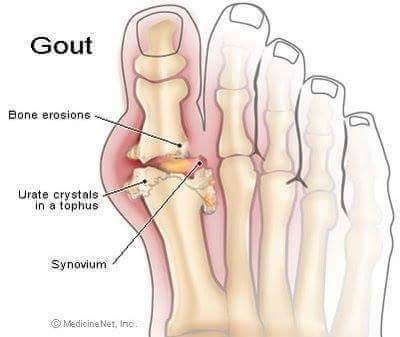
Allopurinol can also react with drugs that are often prescribed for high blood pressure, such as bendroflumethiazide, indapamide, lisinopril, ramipril.
Allopurinol reduces the breakdown of azathioprine, which is used to treat conditions such as rheumatoid arthritis and lupus. Your doctor may change your dose of azathioprine to account for this.
It can also reduce the breakdown of the leukaemia drug mercaptopurine, so the dose of mercaptopurine will need to be reduced if you take this drug.
Allopurinol may also increase the risk of developing a rash if you take them with the antibiotics ampicillin or amoxicillin.
Allopurinol may also increase the effect of warfarin and other drugs that thin the blood. These are known as anticoagulants. If you’re taking blood thinners, you may need your clotting time tested more frequently to check you’re still on the right dose.
Vaccinations
You can have vaccinations while on allopurinol.
Having an operation
If you need surgery, your doctor will discuss with you whether you should continue taking allopurinol.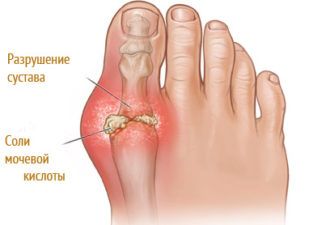
Allopurinol can be continued when you have surgery but, your doctor may recommend that you temporarily stop allopurinol and then restart it again 5-7 days later at the same dose.
If you still have urate crystals in your joints, an operation can trigger an acute attack, usually within the first few days of the surgery, while you are still in hospital.
It’s important to discuss any medications with your doctor before having surgery.
Diagnosis, Treatment, and Prevention of Gout
1. Zhu Y,
Pandya BJ,
Choi HK.
Prevalence of gout and hyperuricemia in the US general population: the National Health and Nutrition Examination Survey 2007–2008. Arthritis Rheum.
2011;63(10):3136–3141….
2. Li C,
Martin BC,
Cummins DF,
Andrews LM,
Frech-Tamas F,
Yadao AM.
Ambulatory resource utilization and cost for gout in United States. Am J Pharm Benefits.
2013;5(2):e46–e54.
3. Lee SJ,
Hirsch JD,
Terkeltaub R,
et al.
Perceptions of disease and health-related quality of life among patients with gout [published correction appears in Rheumatology (Oxford). 2009;48(11):1468]. Rheumatology (Oxford).
2009;48(5):582–586.
4. Neogi T.
Clinical practice. Gout. N Engl J Med.
2011;364(5):443–452.
5. Terkeltaub R.
Update on gout: new therapeutic strategies and options. Nat Rev Rheumatol.
2010;6(1):30–38.
6. Reginato AM,
Mount DB,
Yang I,
Choi HK.
The genetics of hyperuricaemia and gout. Nat Rev Rheumatol.
2012;8(10):610–621.
7. Singh JA.
Racial and gender disparities among patients with gout. Curr Rheumatol Rep.
2013;15(2):307.
8. Choi HK,
Atkinson K,
Karlson EW,
Willett W,
Curhan G.
Purine-rich foods, dairy and protein intake, and the risk of gout in men. N Engl J Med.
N Engl J Med.
2004;350(11):1093–1103.
9. Khanna D,
Fitzgerald JD,
Khanna PP,
et al.
2012 American College of Rheumatology guidelines for management of gout. Part 1: systematic nonpharmacologic and pharmacologic therapeutic approaches to hyperuricemia. Arthritis Care Res (Hoboken).
2012;64(10):1431–1446.
10. Choi HK.
Diet, alcohol, and gout: how do we advise patients given recent developments? Curr Rheumatol Rep.
2005;7(3):220–226.
11. Roddy E,
Doherty M.
Epidemiology of gout. Arthritis Res Ther.
2010;12(6):223.
12. Choi HK,
Atkinson K,
Karlson EW,
Curhan G.
Obesity, weight change, hypertension, diuretic use, and risk of gout in men: the health professionals follow-up study. Arch Intern Med.
2005;165(7):742–748.
13. Gonzalez EB.
An update on the pathology and clinical management of gouty arthritis. Clin Rheumatol.
Clin Rheumatol.
2012;31(1):13–21.
14. Schlesinger N,
Thiele RG.
The pathogenesis of bone erosions in gouty arthritis. Ann Rheum Dis.
2010;69(11):1907–1912.
15. Ning TC,
Keenan RT.
Unusual clinical presentations of gout. Curr Opin Rheumatol.
2010;22(2):181–187.
16. Wallace SL,
Robinson H,
Masi AT,
Decker JL,
McCarty DJ,
Yü TF.
Preliminary criteria for the classification of the acute arthritis of primary gout. Arthritis Rheum.
1977;20(3):895–900.
17. Janssens HJ,
Fransen J,
van de Lisdonk EH,
van Riel PL,
van Weel C,
Janssen M.
A diagnostic rule for acute gouty arthritis in primary care without joint fluid analysis. Arch Intern Med.
2010;170(13):1120–1126.
18. Yu KH,
Luo SF,
Liou LB,
et al.
Concomitant septic and gouty arthritis—an analysis of 30 cases. Rheumatology (Oxford).
Rheumatology (Oxford).
2003;42(9):1062–1066.
19. Pittman JR,
Bross MH.
Diagnosis and management of gout. Am Fam Physician.
1999;59(7):1799–1806, 1810.
20. Janssens HJ,
Janssen M,
van de Lisdonk EH,
van Riel PL,
van Weel C.
Use of oral prednisolone or naproxen for the treatment of gout arthritis: a double-blind, randomised equivalence trial. Lancet.
2008;371(9627):1854–1860.
21. Khanna D,
Khanna PP,
Fitzgerald JD,
et al.
2012 American College of Rheumatology guidelines for management of gout. Part 2: therapy and antiinflammatory prophylaxis of acute gouty arthritis. Arthritis Care Res (Hoboken).
2012;64(10):1447–1461.
22. Burns CM,
Wortmann RL.
Latest evidence on gout management: what the clinician needs to know. Ther Adv Chronic Dis.
2012;3(6):271–286.
23. Zhang W,
Doherty M,
Bardin T,
et al.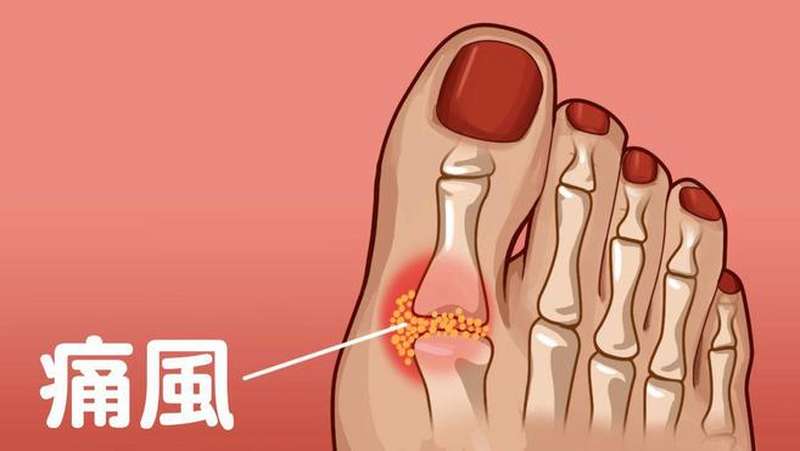
EULAR evidence based recommendations for gout. Part II: management. Report of a task force of the EULAR Standing Committee for International Clinical Studies Including Therapeutics (ESCISIT). Ann Rheum Dis.
2006;65(10):1312–1324.
24. Urano W,
Yamanaka H,
Tsutani H,
et al.
The inflammatory process in the mechanism of decreased serum uric acid concentrations during acute gouty arthritis. J Rheumatol.
2002;29(9):1950–1953.
25. Choi HK,
Curhan G.
Soft drinks, fructose consumption, and the risk of gout in men: prospective cohort study. BMJ.
2008;336(7639):309–312.
26. Choi HK,
Willett W,
Curhan G.
Fructose-rich beverages and risk of gout in women. JAMA.
2010;304(20):2270–2278.
27. Kedar E,
Simkin PA.
A perspective on diet and gout. Adv Chronic Kidney Dis.
2012;19(6):392–397.
28. Drugs for gout. Med Lett Drugs Ther.
Drugs for gout. Med Lett Drugs Ther.
2014;56(1438):22–24.
29. Hueskes BA,
Roovers EA,
Mantel-Teeuwisse AK,
Janssens HJ,
van de Lisdonk EH,
Janssen M.
Use of diuretics and the risk of gouty arthritis: a systematic review. Semin Arthritis Rheum.
2012;41(6):879–889.
30. Choi HK,
Soriano LC,
Zhang Y,
Rodríguez LA.
Antihypertensive drugs and risk of incident gout among patients with hypertension: population based case-control study. BMJ.
2012;344:d8190.
31. Goicoechea M,
de Vinuesa SG,
Verdalles U,
et al.
Effect of allopurinol in chronic kidney disease progression and cardiovascular risk. Clin J Am Soc Nephrol.
2010;5(8):1388–1393.
32. George J,
Carr E,
Davies J,
Belch JJ,
Struthers A.
High-dose allopurinol improves endothelial function by profoundly reducing vascular oxidative stress and not by lowering uric acid. Circulation.
Circulation.
2006;114(23):2508–2516.
33. Stamp LK,
Taylor WJ,
Jones PB,
et al.
Starting dose is a risk factor for allopurinol hypersensitivity syndrome: a proposed safe starting dose of allopurinol. Arthritis Rheum.
2012;64(8):2529–2536.
34. Hershfield MS,
Callaghan JT,
Tassaneeyakul W,
et al.
Clinical Pharmacogenetics Implementation Consortium guidelines for human leukocyte antigen-B genotype and allopurinol dosing. Clin Pharmacol Ther.
2013;93(2):153–158.
35. Becker MA,
Schumacher HR Jr,
Wortmann RL,
et al.
Febuxostat compared with allopurinol in patients with hyperuricemia and gout. N Engl J Med.
2005;353(23):2450–2461.
36. Love BL.
Febuxostat (Uloric) for hyperuricemia and gout. Am Fam Physician.
2010;81(10):1287–1289.
37. Chattopadhyay I,
Shetty HG,
Routledge PA,
Jeffery J.
Colchicine induced rhabdomyolysis. Postgrad Med J.
2001;77(905):191–192.
Gout medications | Health Navigator NZ
Medicines used for gout differ depending on whether they are used to treat an acute attack of gout, or whether they are used to prevent future attacks.
On this page you will find information on:
Medicines for acute gout attacks
The goal of treatment for acute gout attacks is fast pain relief. In addition to resting the affected joint and using ice to reduce swelling, the following medications may be used short-term, until the pain and inflammation subside.
If treatment is started right away, relief from symptoms often occurs within 24 hours.
Non-steroidal anti-inflammatory drugs (NSAIDs)
These medications reduce pain, swelling and redness (inflammation) quickly.
- Examples of commonly used NSAIDs are:
- Side effects:
- NSAIDs can cause tummy problems such as indigestion and nausea, and kidney problems.

- There is also a risk of stomach ulcers, high blood pressure and heart problems.
- Most people, however, find they tolerate NSAIDs well with good relief of their pain.
- Because of the risks associated with NSAIDs, your doctor will prescribe the lowest dose possible for a short length of time.
- NSAIDs can cause tummy problems such as indigestion and nausea, and kidney problems.
- Aspirin not recommended
- Although it is an NSAID, aspirin is not recommended for gout as it can actually increase the level of uric acid in your blood.
- Low doses of aspirin (100 mg daily), when prescribed for the prevention of heart attacks, should not increase your uric acid levels significantly, and should be continued.
Corticosteroids
If you cannot take NSAIDs and there is no infection, you may be given a corticosteroid.
- Can be given as:
- Side effects: Corticosteroids can cause mood changes, sleep problems and raised blood pressure and blood glucose.

Colchicine
Another option for treating an acute of gout is colchicine. This is usually reserved if you cannot take NSAIDs or prednisone.
- Use: Colchicine is also used to reduce gout flares while starting allopurinol, or other uric acid-lowering medicines.
- Side effects: Colchicine can cause unpleasant side effects such as nausea (feeling sick), vomiting (being sick) and diarrhoea (runny poos).
Medicines to prevent recurrent gout attacks
If you have repeated attacks of gout, your doctor may recommend preventive medication. This helps to prevent further attacks of gout and damage to your joints and organs such as your kidneys.
Because gout is caused by raised uric acid levels in the blood, preventive medications work by reducing uric acid levels. This is also called urate lowering therapy.
The goal of these medicines is to reduce the uric acid levels below 0.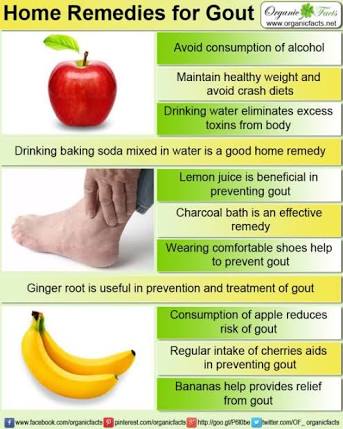 36mmol/L. If the uric acid level is kept at this level long-term, the gout crystals will dissolve, and the risk of gout attacks and joint damage from gout will gradually reduce. The options include:
36mmol/L. If the uric acid level is kept at this level long-term, the gout crystals will dissolve, and the risk of gout attacks and joint damage from gout will gradually reduce. The options include:
Medicines that block uric acid production
- Examples: allopurinol and febuxostat.
- How they work: These medications limit the amount of uric acid your body makes.
- Risks: Acute attacks or ‘flares’
- Doctors sometimes delay the start of these medications for at least a week after the acute gout has settled because they may actually make a gout attack last longer, or trigger acute attacks (‘flares’ or ‘breakthrough’ attacks) at the start of treatment.
- To reduce the risk of such acute flares of gout your doctor may prescribe a small dose of colchicine, or an NSAID, for 3-6 months after starting treatment with allopurinol or febuxostat.
Medicines that improve uric acid removal
- Example: probenecid.

- How it works:
- Probenecid improves your kidneys’ ability to remove uric acid from your body.
- This may lower your uric acid levels and reduce your risk of gout, but the level of uric acid in your urine is increased, which may cause kidney stones.
Understanding your medicines
Taking medicines is an important part of treating and preventing gout. In this video, Health Navigator consumer representative and cultural advisor Merle Samuels shares tips for managing your medicines.
(Health Navigator, NZ, 2019)
Living well with a long-term condition
Gout is a long-term condition which means that it is on-going and you will need to take medicines every day for many years to stay well. Many people find this challenging. In this video Merle discusses how she looks after herself with her long-term conditions.
Many people find this challenging. In this video Merle discusses how she looks after herself with her long-term conditions.
(Health Navigator, NZ, 2019)
Learn more
Gout Arthritis New Zealand
Gout – Treatment NHS Choices
90,000 Gout medicine
Before talking about medications for gout, let’s define what kind of disease it is.
The insidiousness of this joint pathology is that it can be asymptomatic at the initial stage – and suddenly explode with a violent attack. You can check the level of uric acid with a regular, traditional blood test. It is impossible to draw an unambiguous conclusion on this indicator, the same deviation may be due to different reasons, but you need to consult a doctor: he will tell you what additional studies are worth going through, how to adjust the analysis indicators.
Contents :
How is an incipient illness recognized?
Remember: your health is of much greater interest to you than to the most conscientious physician. If there are violations, you yourself must make an appointment with a doctor, view the examination results, and accept recommendations. The doctor has a lot of patients, and you have one (one), so monitor your health personally. The sooner the diagnosis is made, the less chances that the disease will develop into an exacerbation stage, causing you excruciating pain, destroying your joints, and overloading your kidneys.
No self-medication!
The diagnosis is made – what next?
First of all, listen to doctors, not charlatans. Conspiracies and fumigation from coal can neither treat nor slow down gout. And some plants (sour berries, citrus fruits, mustard and other spices) can provoke an exacerbation.
All drugs are prescribed only by the supervising doctor, whose computer reflects all your chronic diseases, drugs taken for other diseases, etc. For example, asthmatics cannot take Voltaren orally, but for external treatment it is possible.
For example, asthmatics cannot take Voltaren orally, but for external treatment it is possible.
In the acute stage, physiotherapy, mineral waters, mud applications and many other forms of treatment are contraindicated. And even if there is no exacerbation and there was no one, you should go to the resort with a card containing the results of your blood and urine tests.
It is necessary to take into account concomitant diseases at the resort. No treatment with baths and massages at elevated temperatures, with caution – with epilepsy, varicose veins, cardiac and bronchial asthma.Such balneotherapy is categorically contraindicated for nephritis, nephrosis, heart disease, during pregnancy and lactation, mental disorders. All these processes must be reported to the spa doctor, they will select something alternative for you.
Drug treatment
Once again we remind the common truth: no two organisms are alike. The most difficult patients are those who come to demand the prescription of this or that drug: “But it helped my friend’s aunt a lot, I want it too!” The physician selects a combination of drugs that is right for you.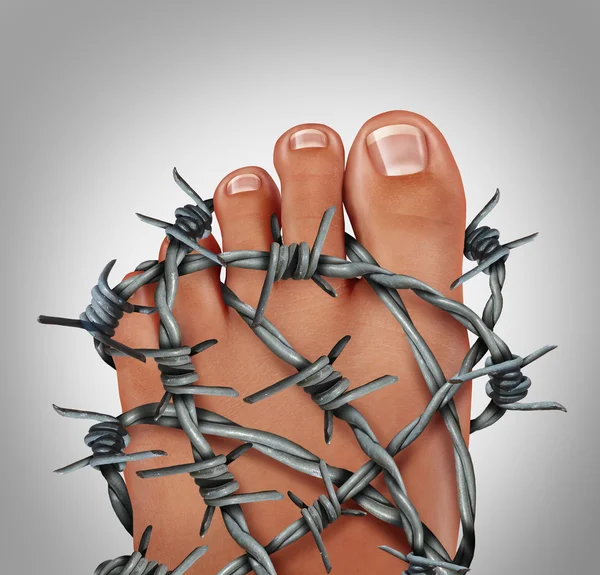
All specific medications for gout act in one of two directions:
1. Obstruction of uric acid hypersynthesis.
2. Removal from the body of chemical compounds obtained as a result of the metabolism of the same acid.
Along with them, anti-inflammatory drugs and analgesics (pain relievers) are prescribed.
If urgently needed, non-steroidal anti-inflammatory drugs (NSAIDs) and glucocorticosteroids can be administered intravenously once.Then the course of treatment is continued, using drugs orally (tablets) and externally (ointments, compresses).
All drugs are divided into three large groups:
Cortisone group (synthetic analyzes of steroids that do not suppress immunity).
Specific pain relievers that are effective for gout. Remember: you cannot just swallow analgesics in handfuls: they will not bring benefits, and on the gastrointestinal tract, blood vessels can have a negative effect.
 For gout, ibuprofen-based drugs are optimal. The specific drug and the method of its use are also prescribed only by the doctor, taking into account the concomitant diseases.
For gout, ibuprofen-based drugs are optimal. The specific drug and the method of its use are also prescribed only by the doctor, taking into account the concomitant diseases.Voltaren and a number of other drugs based on sodium diclofenac. In some chronic diseases, it is not shown in one form or another, be sure to ask your doctor if it is possible, say, with heart failure or bronchial asthma, to take these pills.
Do you need a diet?
Not just necessary – necessary! If you want the disease not to progress and bother you as rarely as possible, the diet will have to be seriously changed.
First, we remove high-calorie soups and borscht based on beef, lamb, pork. We drain the first water from the broths, add boiling water and use it to prepare a dietary soup from skinned chicken, or better – turkey.
Secondly, the less sour, the better.All fruits, berries, citruses with a sour taste are characterized by a high content of purines, that is, they make it difficult to maintain the balance of uric acid.
Thirdly, spirits and beer are no longer for us. Sometimes – a glass of sweet red wine, once a week, and it is better to give up alcohol altogether. We also cross out both smoked fish and salami sausage.
And, of course, you should visit a nutritionist who will tell you what foods should be included in the diet so that it is both tasty and healthy.There are a lot of healthy products (green tea, watermelons, nuts and seeds, any cereals and stews, except semolina, oat broth with milk, baked fish, etc.), so you can eat well without compromising your health.
90,000 Gout: Signs, Symptoms, Treatment of Gout. Gout of the vessels of the legs
Gout is a systemic topical disease that develops in connection with inflammation at the site of deposition of sodium monourate crystals in people with hyperuricemia (increased uric acid in the blood) due to environmental and / or genetic factors.(Nosonova V.A. 2003).
Gout is considered one of the “old” diseases. With acute pains in the foot in the 5th century BC, Hippocrates described “gout” (the name of the disease comes from the Greek words “under” – leg, “agra” – trap). Such famous people as Leonardo da Vinci, Alexander the Great, members of the Medici family from Florence, Isaac Newton, Charles Darwin suffered from this disease.
With acute pains in the foot in the 5th century BC, Hippocrates described “gout” (the name of the disease comes from the Greek words “under” – leg, “agra” – trap). Such famous people as Leonardo da Vinci, Alexander the Great, members of the Medici family from Florence, Isaac Newton, Charles Darwin suffered from this disease.
Pathogenesis of the disease
It is known that purine bases in the human body are broken down to uric acid, then excreted by the kidneys.When the concentration of uric acid in the blood is exceeded, its crystals are deposited in the form of sodium monourate in the joints, kidneys, and soft tissues. As a result, arthritis occurs, formations appear on the flexor surfaces of the joints, auricles (tophus), kidney damage develops in the form of urate nephropathy, and stones are formed in the kidneys.
Most often, gout affects men aged 30-60 years, in women, the disease develops less often, more often in the postmenopausal period.
Causes of gout
- Taking medications: thiazide diuretics, aspirin (2 g per day), cyclosporins.

- Diseases leading to the appearance of symptoms of gout: ischemic heart disease (IHD), arterial hypertension, metabolic syndrome, chronic renal failure, psoriasis, some blood diseases. Organ transplantation and the administration of contrast media during x-ray studies can also contribute to the development of gout.
- The abuse of foods rich in purine bases can provoke and aggravate the development of this disease: fatty meats and fish, alcohol, carbonated drinks, legumes, eggs, chocolate, mushrooms.
Classification of the disease
Distinguish between primary and secondary gout. More than 99% of cases of primary gout are called idiopathic. This means that the cause of hyperuricemia is not known. Primary gout is the result of a combination of genetic, hormonal, and dietary factors.Secondary gout is caused by drug therapy or other factors that cause metabolic disorders in the body.
Signs and symptoms of gout
This is an acute attack of arthritis, usually of one joint, more often the first metatarsophalangeal, ankle, or knee. Usually, an attack of arthritis develops in the early morning or at night, in the midst of complete health. It manifests itself in the form of severe pressing pain in a particular joint. The affected joint swells, the temperature rises in the area of the joint, the skin turns red and begins to shine.The pain usually gets better during the day, but it gets worse by nightfall. The duration of a gout attack lasts from two to three days to a week, sometimes more. With a second attack, other joints may be involved in such inflammation. With a prolonged course of gout, tofuses are formed on the flexor surfaces of the joints, which can open up with the release of uric acid crystals. At this point, the patient experiences quite intense pain.
Usually, an attack of arthritis develops in the early morning or at night, in the midst of complete health. It manifests itself in the form of severe pressing pain in a particular joint. The affected joint swells, the temperature rises in the area of the joint, the skin turns red and begins to shine.The pain usually gets better during the day, but it gets worse by nightfall. The duration of a gout attack lasts from two to three days to a week, sometimes more. With a second attack, other joints may be involved in such inflammation. With a prolonged course of gout, tofuses are formed on the flexor surfaces of the joints, which can open up with the release of uric acid crystals. At this point, the patient experiences quite intense pain.
Criteria for the diagnosis of gout
| Criterion | Joint | Score |
|---|---|---|
Clinical | ||
| Involvement of the joints during a typical gout attack | ankle / tarsus, 1st metatarsophalangeal joint | + 1 point + 2 points |
| Typical acute gout attack | erythema above the joint surface (reported by the patient or fixed by the doctor), inability to touch or press on the area of the affected joint, significant difficulty walking or inability to perform. 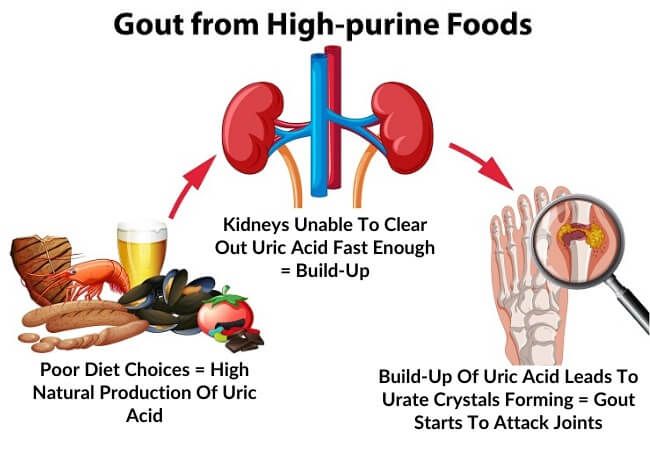 | one characteristic “+1 point” two characteristics “+2 points” three characteristics “+3 points” |
| Dynamics of a typical acute attack | The presence of 2 or more signs, regardless of anti-inflammatory therapy:
| one typical episode “+1 point” recurrent typical episodes “+2 points” |
| Clinical signs of tofus | A drained or gypsum-like subcutaneous nodule, often vascularized, with typical localization: joints, ears, olecranon bursa, fingerpads, tendons. | “+4 points” are presented |
| Laboratory Methods | ||
| Uric acid level (determined during the period of time when the patient does not receive drugs that lower the level of uric acid) | <4 mg / dL (240 μmol / L) 6- 8- > 10 mg / dL (> 600 μmol / L) | “- 4 points” “+2 points” “+3 points” “+4 points” |
| Analysis of synovial fluid (polarizing microscopy) | Negative result. | “-2 points” |
| Diagnostic Imaging Techniques | ||
| Signs of urat deposit | Ultrasound phenomenon of “double circuit” or signs of urate deposition when using CT with two sources of radiation. | “+4 points” |
| Signs of a gout-related joint lesion | Detection of at least 1 erosion during radiography of the hands and / or feet. | “+4 points” |
An example of using the diagnostic criteria:
- Attack of arthritis of the I metatarsophalangeal joint – +2 points
- Description of the episode: erythema over the joint, inability to tolerate touch / pressure, great difficulty walking / inability to use the affected joint +3 points
- More than 1 “typical episode of arthritis” – +2 points
- Hyperuricemia (548 μmol / L) – +3 points
Methods for the treatment of gout
Treatment for gout consists of both pharmacological and non-pharmacological methods, and the following factors should be considered:
- uric acid concentration, number of previous attacks of arthritis,
- stage of the disease (asymptomatic increase in uric acid, interictal period, acute or intermittent arthritis, chronic tofus gout,
- age, gender, obesity, hyperuricemic drugs, polypharmacy.

It should be remembered that asymptomatic hyperuricemia is not equated with gout. Currently, there are no data proving the need for drug therapy to maintain normouricemia in such patients; the main method of therapy in this case is the treatment of comorbid diseases, correction of the diet and lifestyle modification.
In treating gout, a combination of non-pharmacological and pharmacological therapies is more effective than monotherapy.When treating, it is necessary to take into account the phase of the disease: acute attack of arthritis, interictal period, chronic form, tofus form, serum uric acid concentration, number of arthritis attacks, the presence of comorbid conditions such as diabetes mellitus (DM), arterial hypertension, ischemic heart disease, and risk factors for hyperuricemia.
The main aspect of therapy is teaching the patient the correct way of life, reducing body weight, diet, reducing alcohol intake, especially beer.Restricting the diet of purine-rich animal products and reducing body weight can help lower serum uric acid levels.
One of the prerequisites for treating gout is control over comorbid diseases – dyslipidemia, alternative hypertension, diabetes mellitus, as well as weight loss and smoking cessation.
Treatment of acute attack of gouty arthritis
Non-steroidal anti-inflammatory drugs (NSAIDs) and oral colchicine are used to treat an acute attack of gout.One of the effective methods of treatment is the removal of synovial fluid and intra-articular administration of long-acting steroids. This method of treatment is effective and safe.
Recommendations for antihyperuricemic therapy
The goal of antihyperuricemic therapy is to prevent the formation and dissolution of existing crystals of sodium monourate by maintaining the level of uric acid (MC) below 360 μmol / L.
Allopurinol – promotes adequate long-term antihyperuricemic therapy.The drug is recommended at a dose of 100 mg daily, if necessary, the dose is increased by 100 mg every two to four weeks.
 Patients with renal impairment need a dose adjustment of this drug.
Patients with renal impairment need a dose adjustment of this drug.Uricosuric agents (probenecid, sulfinpyrazone) are used as an alternative to allopurinol in patients with normal renal function. These drugs are relatively contraindicated in patients with urolithiasis.
Benzbromarone – powerful uricosouric; the drug is more effective than allopurinol.It is used for moderate decline in renal function, but requires monitoring due to hepatotoxicity.
Colchicine can be used as a prophylaxis for joint attacks during the first month of antihyperuricemic therapy (0.5-1.0 grams per day) and / or NSAIDs.
It is worth noting that in patients with gout, diuretics are discontinued if possible (except when diuretics are prescribed for health reasons).
- Losartan and fenofibrate have a moderate uricosuric effect. These drugs are recommended for patients who are resistant or poorly tolerated allopurinol or other uricosourics, in the presence of hypertension or metabolic syndrome.
 However, the clinical significance of this therapy and its cost-effectiveness are still unknown.
However, the clinical significance of this therapy and its cost-effectiveness are still unknown.
In the Clinic of High Medical Technologies named after N.I. Pirogova, patients will be able to determine the serum level of uric acid and other important biochemical blood parameters, as well as pass clinical blood and urine tests, and receive qualified advice from a rheumatologist on treatment both in the interictal period of the disease and during the attack of an acute gouty arthritis.
Application of Blemaren in the treatment of patients with gout
Gout is a disease associated with metabolic disorders, leading to an increase in the content of uric acid in the blood, the deposition of uric acid crystals in the tissues and the resulting inflammation in the joints and other organs and tissues.
Uric acid is a product of protein metabolism in the human body. Normally, it is excreted by the kidneys, in small quantities – by the intestines.The reasons for the increase in uric acid in the blood can be both excessive production in the liver and insufficient excretion. In a number of people with a high uric acid content, crystals of uric acid begin to form, which are deposited in tissues, leading to the development of inflammation. Most often, crystals are deposited in the joint cavities, as well as in the kidneys, heart, stomach, intestines, and even in the chambers of the eye.
Gout is primarily a disease of young men (40-50 years old). After 50-60 years, the level of uric acid and the incidence of gout increases in women.Approximately 20% of those with gout have a familial disorder. The development of gout is facilitated by a violation of the diet: the predominance in food of foods rich in purines, mainly meat, the use of alcohol, especially beer, the intake of a number of drugs for a long time: salicylates, thiazide diuretics, vitamin B12, riboxin, laxative abuse, operations, injuries. The main clinical manifestation of gout is an acute attack of arthritis. The frequency and duration of gouty attacks, especially in the absence of adequate treatment, gradually increase.Long before the joints are affected, gouty nephropathy may occur. The reason for the development of kidney stones with gout is an increased level of uric acid and an acidic environment in the urine, an increased excretion of uric acid. Kidney dysfunction is the most common cause of death in patients with gout.
Basic approaches to the treatment of gout.
Non-steroidal anti-inflammatory drugs (NSAIDs) are used to relieve attacks of gouty arthritis. Colchicine (Colchicum), an extract of the meadow saffron bulb, belongs to the first-line drugs for treating acute attacks of gout.With contraindications to the use of NSAIDs and colchicum, glucocortyroids are used. Allopurinol is widely used to correct the concentration of uric acid in the blood.
With a tendency of patients with gout to stone formation and the formation of urate nephropathy, a sluggish chronic inflammation often develops, leading to a decrease in renal excretory function. In this regard, when appointing adequate urate-lowering therapy to patients with gout, it is necessary to take into account the presence of a high risk of kidney damage and use drugs in combination therapy that help prevent the formation of uric acid and mixed stones or their dissolution.
The use of citrate mixtures in patients with gout (Blemaren preparation), which promote alkalization of urine and resorption of stones, is of great importance, especially, according to the staff of the Research Institute of Rheumatology of the Russian Academy of Medical Sciences (Barskova V.G., Eliseev M.S.), at the beginning of treatment with allopurinol. It is important to note that the results of a study in 30 patients with gout with nephrolithiasis, conducted at the State Institution of the Institute of Rheumatology of the Russian Academy of Medical Sciences, showed that Blemaren favorably influenced, in addition to regulating urine pH, uric acid metabolism, leading to an increase in the excretion of uric acid by the kidneys, and to a decrease in the level of urinary acids in the blood.A distinctive feature of Blemaren is the optimal ratio of citric acid and its salts and a low sodium content, due to which, with a minimal effect on the acid-base balance, a high rate of dissolution of uric acid stones is achieved.
Study of the use of the drug Blemaren in the treatment of patients with gout
Objectives and methods of research
The aim of the study was to study the effect of a short course of application of the Blemaren citrate buffer mixture on the indicators of uric acid metabolism in patients with gout with nephrolithiasis.
An open study included 30 patients with gout, of which 26 were men and 4 were women, examined at the Institute of Rheumatology of the Russian Academy of Medical Sciences. The patients’ age ranged from 25 to 77 years. 24 patients had a chronic course of arthritis, the rest had a recurrent course, an interictal period of the disease. 24 patients had subcutaneous tophi. The obligatory criterion for inclusion in the study was the presence of calculi in the kidneys according to the results of ultrasound.
Treatment prior to study initiation was unchanged for at least 2 months.The dose of allopurinol, antihypertensive and hypoglycemic drugs did not change during the entire study. Of 24 patients with chronic arthritis, 8 were constantly taking NSAIDs in moderate therapeutic doses. Of the patients constantly taking allopurinol, NSAIDs were taught 5.
Examination, laboratory studies were carried out before and 1 month after taking Blemaren, initially prescribed in a dose of 3 g, 3 soluble tablets per day with meals. In the future, the dose of the drug could be changed both upward and downward, depending on the indicators of urine acidity, which was maintained within the pH range of 6.2 – 6.8.The patients changed the dose of the drug independently, depending on the urine pH values according to the indicator strips. Laboratory tests included determining the level of uric acid in blood and urine. Also, indicators of renal function and liver function were determined, all patients underwent ultrasound of the kidneys.
Research results.
All 30 patients were examined after 1 month of treatment with Blemaren. 24 patients indicated good, 5 – excellent and 1 – satisfactory tolerance, which did not depend on the concomitant intake of allopurinol and NSAIDs.There were no side effects that caused the drug to be discontinued. In 1 patient in the first few days of treatment, nausea and heartburn were noted, which disappeared after reducing the dose of the drug. During the study, exacerbation of gouty arthritis was noted in 1 patient with chronic gout in the second week of taking Blemaren, in connection with which the dose of NSAIDs was temporarily changed.
After completion of the course of therapy with Blemaren, a decrease in the mean serum uric acid level by 8% was recorded.The level of daily excretion (excretion) of uric acid, on the contrary, increased from 436.8 to 564.5 mg / day. On average, the increase in uric acid excretion was 20%. In the group of patients receiving monotherapy with Blemaren, the daily excretion of uric acid increased to a much greater extent – from 201.6 to 705.6 mg / day. The average value of the excretion of uric acid with Blemaren monotherapy increased by 66%. In patients taking allopurinol, the appointment of Blemaren did not lead to a significant change in the rates of uric acid excretion.The greatest increase in uric acid excretion after Blemaren therapy was observed at its initially low values. The average value of the excretion of uric acid in such patients increased by more than 1.9 times.
In addition, a direct correlation was found between a decrease in the serum level of uric acid and an increase in its daily excretion in the urine.
Significant dynamics of indicators of liver function and excretory function of the kidneys, electrolyte metabolism before and after the course of therapy with Blemaren was not obtained.
Conclusions based on the research results.
Selecting the optimal therapy for patients with gout is not an easy task. The frequent combination of gout with other metabolic disorders suggests, in addition to the urate-lowering and anti-inflammatory therapy necessary for most patients, the use of antihypertensive, hypoglycemic, hypolipidemic and many other drugs. Often, the number of vital drugs taken by patients is so great that the indications for the appointment of any new drug must be strictly justified.However, some principles of drug treatment of patients with gout and nephrolithiasis should be considered unshakable. These include the correction of the main laboratory parameters reflecting the severity of the course of gout: serum uric acid levels and uricosuria levels. Conservative treatment of urate nephrolithiasis is also aimed at achieving the norms of these indicators. Recall that over the past centuries, the most important component of complex therapy for both gout and ICD has been spa treatment using mineral springs (the beneficial effect of mineral waters on urine pH and its electrolyte composition).However, the appointment of mineral waters must be treated with caution: and they are used only after the stones have passed with satisfactory renal function, they significantly increase urine output, which is permissible not in all patients, and can change the acid-base state. Unfortunately, it cannot serve as an alternative to conservative and surgical treatment of ICD, since in 60 – 70% of patients, after removal of stones, they are formed again.
In the last 30 – 40 years, highly effective and safe citrate mixtures have been used for the prevention and treatment of KSD and preparation for lithotripsy.A number of studies have shown that under the influence of citrate mixtures, a gradual dose-dependent dissolution of most salts occurs, first of all, the most common ones – urates and oxalates.
Maintaining optimal acidity of urine in patients with gout may be of fundamental importance not only for reducing the risk of urolithiasis and dissolution of existing calculi. Hypoexcretion of uric acid is known to be the most common cause of gout and hyperuricemia (HU). It has been shown that a significant increase in urine acidity from acidic to alkaline, including with the use of citrates, along with an increase in the solubility of uric acid, leads to a multiple increase in its excretion.Extremely important in this regard are the data obtained in the study, indicating an increase in the excretion of uric acid, simultaneously with a decrease in uricemia after a short course of Blemaren therapy. This suggests that a decrease in the severity of GU may be a consequence of the normalization of the excretion of uric acid from the body precisely as a result of taking the drug Blemaren. And at the same time, in the case of initially normal values of uric acid excretion, this level remained unchanged.
An important result of the study is associated with the absence of side effects when taking Blemaren, a negative effect on the indicators of liver and kidney function, and serum electrolyte levels.
So, as a result of the research, the following conclusions were made:
- The use of Blemaren in patients with gout with nephrolithiasis improves uric acid metabolism due to a significant increase in the excretion of uric acid. The initially normal level of uric acid excretion does not change significantly.
- An increase in uric acid excretion when taking Blemaren helps to reduce uricemia by an average of 8%, inversely correlating with serum uric acid levels.
- Blemaren is characterized by high safety, when taken, there is no deterioration in liver function, kidney function and electrolyte metabolism.
- The presence of nephrolithiasis in patients with gout should be considered as an indication for prescribing Blemaren.
Treatment of gout
Gout, hypertension and diabetes mellitus.What medications can be used for such a combination of diagnoses?
I was diagnosed with gout (deformity of the first phalanx of the joint of the big toe of the right foot). I am hypertensive, I have been taking diroton and tenoric for 6-7 years every day. In addition, I have diabetes mellitus (non-insulin dependent). Are diuretics (tenoric) contraindicated for gouty arthritis? What medications can be used for these diagnoses?
Olga, 48 years old, asked by email mail.
Natalia MARTUSEVICH, rheumatologist, associate professor of the 1st Department of Internal Diseases of the Belarusian State Medical University, Ph.D.honey. Sciences
Gout is a chronic disease associated with impaired purine metabolism, accompanied by a significant increase in the blood of uric acid salts, followed by the deposition of their crystals in tissues, often periarticular and articular. Clinically manifested by paroxysmal arthritis and possible damage to internal organs, primarily the kidneys.
In women before menopause, gout develops in exceptional cases. If gouty arthritis (PA) is diagnosed by a physician or surgeon, the rheumatologist should also confirm the diagnosis.
The main (“basic”) drug for the treatment of gouty arthritis is allopurinol. It lowers serum uric acid levels. Arthritis attacks are less frequent and the risk of kidney damage is reduced. It is prescribed in a small amount (50-100 mg / day) after the relief of exacerbation of gouty arthritis. The dose is gradually increased (50–100 mg weekly) until the target uric acid level (0.36 mmol / L) is reached.
Allopurinol has been used indefinitely.When you stop taking the original level of uric acid is restored. The attacks will resume on the 3rd day.
Cardiomagnyl, aspirin, diuretics (diuretics) can exacerbate the disease, change the concentration of uric acid in the blood serum and provoke its crystallization. It is undesirable to use thiazide diuretics (hypothiazide). Thiazide-like (arifon retard) are acceptable, but not for a long time; uric acid levels must be kept under control.
Concomitant diseases are fertile ground for the progression of gout. Arthritis attacks in this case are longer and more severe. Therefore, an indispensable condition for the successful treatment of PA is the compensation of diabetes mellitus and the correction of arterial hypertension.
With the latter, given the presence of diabetes mellitus, ACE inhibitors (diroton, lisinopril, ramipril, etc.) have an optimal effect. The most preferred are drugs of the sartan group (losartan, valsartan).They lower uric acid levels while preserving kidney function without affecting sugar levels. They also do not cause cough, a side effect of ACE inhibitors.
Tenoric has no direct contraindications for gouty arthritis. This combination drug contains 2 components: atenolol (a cardioselective beta-blocker) and chlorthalidone (a thiazide-like diuretic).
Natalia MARTUSEVICH , rheumatologist, associate professor of the 1st Department of Internal Medicine, BSMU, Cand.honey. Sciences
Medical Bulletin , March 11, 2010
Memorial Sloan Kettering Cancer Center
This document, provided by Lexicomp ® , contains all the information you need to know about the drug, including the indications, route of administration, side effects and when you should contact your healthcare provider.
Trade names: USA
Colcrys; Gloperba; Mitigare
Trade names: Canada
EURO-Colchicine; JAMP-Colchicine; PMS-Colchicine; SANDOZ Colchicine
What is this drug used for?
- Used to treat gout.
- It is used to prevent gout.
- Used to treat familial Mediterranean fever.
- This medicinal product can be used for other indications. Consult your doctor.
What do I need to tell my doctor BEFORE taking this drug?
- If you are allergic to this drug, any of its ingredients, other drugs, foods or substances. Tell your doctor about your allergy and how it manifested itself.
- If you have any of the following health conditions: kidney disease or liver disease.
This list of drugs and diseases that may be adversely associated with this drug is not exhaustive.
This drug can interact with many other drugs. The risk of serious, life-threatening, or life-threatening side effects may be increased. Tell your doctor and pharmacist about all the drugs you are taking (prescription and over-the-counter, natural products and vitamins) and any health problems you have.You need to make sure that this drug is safe for your medical condition and in combination with other drugs you are already taking. Do not start or stop taking any drug, or change the dosage without consulting your doctor.
What do I need to know or do while taking this drug?
All forms of issue:
- Tell all healthcare providers that you are taking this drug.These are doctors, nurses, pharmacists and dentists.
- Do not consume grapefruit or grapefruit juice.
- Fatal overdoses in adults and children have happened with this drug. Keep out of the reach of children. Do not take the drug in higher doses than your doctor prescribed. If this drug is mistakenly taken, call a poison control center or get medical help right away.
- Semen problems have been reported with this drug.This can adversely affect a man’s ability to conceive. This phenomenon may be reversible after discontinuation of the drug. If you have any questions, consult your doctor.
- If you are 65 years of age or older, use this drug with caution. You may have more side effects.
- Tell your doctor if you are pregnant, planning to become pregnant, or breastfeeding. The benefits and risks for you and your child will need to be discussed.
Capsules and oral solution:
- This drug is not approved for the treatment of gout attacks. If you get a gout attack while using this drug, talk to your doctor.
What side effects should I report to my doctor immediately?
WARNING. In rare cases, some people with this drug can cause serious and sometimes deadly side effects.Call your doctor or get medical help right away if you have any of the following signs or symptoms, which may be associated with serious side effects:
- Signs of an allergic reaction such as rash, hives, itching, reddened and swollen skin with blistering or scaling, possibly associated with fever, wheezing or wheezing, tightness in the chest or throat, difficulty breathing, swallowing or speaking, unusual hoarseness, swelling in the mouth, face, lips, tongue, or throat.
- Numbness or tingling in the palms or feet.
- Pale skin.
- Very bad muscle problems have happened with this drug. It can also interfere with kidney function. If you experience muscle pain or weakness, especially if you feel very tired and fatigued, or if you have a fever, tell your doctor. If you have difficulty urinating or the amount of urine you pass changes, tell your doctor.
- Cases of decreased blood cell count have been reported during treatment with this drug. A marked decrease in the number of blood cells can lead to bleeding, infection, or anemia. See your doctor right away if you develop symptoms of an infection such as high fever, chills, or sore throat; any unexplained bruising or bleeding; or when you are very tired or weak.
What are some other side effects of this drug?
Any medicine can have side effects.However, many people have little or no side effects. Call your doctor or get medical help if these or any other side effects bother you or do not go away:
- Abdominal pain or diarrhea.
- Nausea or vomiting.
This list of potential side effects is not exhaustive. If you have any questions about side effects, please contact your doctor. Talk to your doctor about side effects.
You can report side effects to the National Health Office.
You can report side effects to the FDA at 1-800-332-1088. You can also report side effects at https://www.fda.gov/medwatch.
What is the best way to take this drug?
Use this drug as directed by your healthcare practitioner. Read all the information provided to you. Follow all instructions strictly.
All forms of issue:
- Take this medication with or without food.
Liquid (solution):
- Doses of liquid preparation should be measured with caution. Use the dispenser that comes with the medicine. If a dispenser is not included in the package, ask your pharmacist for a dosing product for this drug.
- This medication should not be measured with a regular teaspoon or tablespoon.This can lead to exceeding the dose of the drug.
What should I do if a dose of a drug is missed?
All forms of issue:
- Take the missed dose as soon as you can.
- If it’s time to take your next dose, do not take the missed dose and then return to your normal drug schedule.
- Do not take 2 doses at the same time or an additional dose.
Tablets:
- This drug should be taken as needed to treat a gout attack.
How do I store and / or discard this drug?
Tablets and capsules:
- Store at room temperature, protected from light. Store in a dry place. Do not store in the bathroom.
Liquid (solution):
- Store at room temperature in a dry place. Do not store in the bathroom.
All forms of issue:
- The lid must be tightly closed.
- Store all medicines in a safe place. Keep all medicines out of the reach of children and pets.
- Dispose of unused or expired drugs. Do not empty into toilet or drain unless directed to do so. If you have any questions about the disposal of your medicinal products, consult your pharmacist. Your area may have drug recycling programs.
General information on medicinal products
- If your health does not improve or even worsens, see your doctor.
- Do not give your medicine to anyone or take other people’s medicines.
- Some medicines may come with other patient information sheets. If you have questions about this drug, talk with your doctor, nurse, pharmacist, or other healthcare professional.
- A separate patient instruction sheet is attached to the product. Please read this information carefully. Reread it every time you replenish your supply. If you have questions about this drug, talk with your doctor, pharmacist, or other healthcare professional.
- If you think an overdose has occurred, call a Poison Control Center immediately or seek medical attention. Be prepared to tell or show which drug you took, how much and when it happened.
Use of information by consumer and limitation of liability
This information should not be used to make decisions about taking this or any other drug. Only the attending physician has the necessary knowledge and experience to make decisions about which drugs are appropriate for a particular patient. This information does not guarantee that the drug is safe, effective, or approved for the treatment of any disease or specific patient.Here are only brief general information about this drug. It does NOT contain all available information on the possible use of the drug with instructions for use, warnings, precautions, information about interactions, side effects and risks that may be associated with this drug. This information should not be construed as a guide to treatment and does not replace the information provided to you by your healthcare professional. Check with your doctor for complete information on the possible risks and benefits of taking this drug.Use of this information is governed by the Lexicomp End User License Agreement available at https://www.wolterskluwer.com/en/solutions/lexicomp/about/eula.
Copyright
© UpToDate, Inc. and its affiliates and / or licensors, 2021. All rights reserved.
90,000 Coffee against gout – how to relieve acute pain with a special diet
One of the most dangerous diseases of the joints, medical scientists consider arthritis.It is a generic term for over 100 different diseases. The most common form of arthritis, according to statistics, is gout.
Photo: pixabay.com
In the course of numerous observations of patients with arthritis and in particular gout, scientists have drawn conclusions that can affect the course of the disease, alleviate the fate of patients in case of acute attacks of pain. This is the story of another Express article.
Each type of arthritis has its own trigger that affects the course of the disease.To establish an invisible “enemy” that promotes inflammation and acute attacks means disarming him. For example, gout, which is one of the most painful forms of arthritis, worsens as soon as the level of uric acid in the blood begins to rise. It causes the formation and accumulation of crystals in and around the joint. In the case of gout, the trigger may be an irregular diet.
Gout-promoting uric acid is produced when the body breaks down a chemical called purine.This is how the experts at the Mayo Clinic explain the process.
Purine, which is present in every organism, is produced naturally. It is also found in some foods. By the way, there are some very useful ones among them. But people with gout should avoid eating large amounts of foods high in purines.
According to Health body Versus Arthritis, seafood, especially oily fish and shellfish, are high in purines and should be consumed in moderation.This sounds odd and even contradictory, because oily fish, which is rich in omega-3 polyunsaturated fatty acids, reduces inflammation and reduces the risk of arthritis. But it was gout that became the exception to the rule.
High purine foods include:
- red meat, game, offal;
- foods rich in yeast extracts;
- highly processed foods, sugary carbonated drinks.
Many of the above are rich in protein, which is an important part of the diet for people with gout.But it can be obtained not only from meat. Legumes, eggs, dairy products are rich in protein.
How to relieve gout pain
With the help of a special diet, you can reduce the level of uric acid in the blood, thereby alleviating the pain symptoms of gout. A balanced diet will reduce the risk of new attacks and slow down the progression of the disease. In the menu of people with gout, British scientists advise to include:
- Vitamin C. Helps reduce uric acid levels.The attending physician will select the right dosage, tell you when it is best to take the vitamin.
- Coffee. Some studies showing that drinking coffee in moderation reduces the risk of developing gout sound compelling. But you can drink coffee if there are no other contraindications. But in this case, a conversation with a doctor is necessary.
All arguments given in the article are for informational purposes only. Prescribing treatment, choosing the right products for the daily menu is possible only with the participation of the attending doctor.
Earlier, the online publication Uchitelskaya Gazeta talked about how conventional foods can change the lives of patients with arthritis, about the research of scientists concerning the benefits of white and brown rice, as well as the risks associated with the use of cereals. There were also published materials on how to choose a diet for arthritis, how to determine an excess of vitamin D in the body.
90,000 Treatment of gout in the EMC Therapeutic Clinic in Moscow
By Evgeny Zhilyaev,
Professor, Dr.MD, doctor of the highest category.
The disease of gout is translated into Russian as “foot in a trap” and is one of the most common diseases of the joints. In gout, uric acid crystals are deposited in the joints and bones, causing inflammation and acute attacks of pain. The reason for the development of the disease is the absence in the human body of the enzyme uricase, which destroys uric acid.
Gout greatly reduces the patient’s quality of life. At the initial stage, gout most often affects the joint of the base of the big toe and manifests itself in periodic attacks of severe pain.The ankle and knee joints, and the arch of the foot can also be affected.
Pain in gout occurs suddenly, increases over time, accompanied by severe swelling of the affected joint, sharp pain when touched and sometimes redness of the joint. The pain during an attack is comparable to a very strong blow. Pain makes it impossible for a person to move, wear shoes, even touch an inflamed joint. The attacks are usually short-lived and last from 2 to 3 days to a week.Treatment for gout during attacks is pain relief.
Gout is more commonly diagnosed in men and is primary or secondary. The development of primary gout in most cases is due to a hereditary predisposition. An enzyme is transferred with genes that can produce more uric acid. Secondary gout develops as a result of kidney dysfunction, when uric acid is produced in small quantities but not excreted from the body.Women suffer from gout much less often than men, and in women it is in most cases secondary.
Distinguish between confirmed and suspected gout. Confirmed is a disease that is diagnosed using appropriate equipment in the laboratory, when uric acid crystals obtained from a joint or from their subcutaneous accumulation (tofus) are visualized under a microscope.
Complications of gout
If left untreated, gout can develop into chronic arthritis.Over time, attacks of acute pain become more frequent, several joints are involved in the process. The pain subsides in one joint and occurs in the other. As a result, the patient constantly experiences severe pain. Chronic gout is a severe articular disease that actually confuses the patient to bed.
Uric acid in high concentrations is toxic to the kidneys and, over time, impairs their function. The more the kidney function is impaired, the lower the rate of excretion of uric acid and the faster its content in the blood grows.Usually, by the time the patient shows signs of gout, kidney damage is already present.
With gout, the risk of developing cardiovascular diseases is increased: heart attack, stroke, etc. A patient with gout has a risk of stroke about the same as a patient with diabetes. Cardiovascular disease is not always associated with gout alone. Gout is often associated with obesity, hypertension, or impaired glucose tolerance.
Diagnosis of gout at the European Medical Center
To confirm the presence of the disease, the detection of uric acid crystals in the joint fluid is required.To do this, the doctor performs a joint puncture, in which a sample of the joint fluid is taken using a special needle for further examination in the laboratory. In recent years, approaches to the diagnosis of gout that do not require puncture have been practiced.
Gout Treatment
Treatment of gout consists of two stages:
Relief of an attack. For this purpose, non-steroidal anti-inflammatory drugs are used. For relief, in some cases, Colchicine is used.It is also used the introduction of small doses of a long-acting anti-inflammatory hormone locally in the inflamed joint. In some cases, in the chronic stage of the disease, systemic therapy with glucocorticoid hormones is used to treat gout. The doctor decides on the choice of a particular drug individually in each case.
Decrease in blood concentration of uric acid. A diet with a strict restriction on the use of all types of meat and poultry, some restriction on the use of fish and seafood is recommended.It is very important to completely eliminate the use of alcohol, because alcohol blocks the excretion of uric acid and increases the load on the kidneys, thereby accelerating the process of their destruction. The attending physician will make detailed recommendations for restricting food and changing the diet. The diet is individual in each case. Medication is prescribed to lower the level of uric acid. The goal is to reduce the concentration of uric acid below 350 μmol / l, with such indicators, uric acid loses its ability to crystallize and be deposited in the joints.If the target level is maintained throughout the year, all existing deposits and even massive tofuses will dissolve and disappear. In most patients who do not have visible tophi, complete dissolution usually occurs within 3 months. However, even when the target uric acid levels are reached, seizures may recur for some time due to the presence of acid stores in the tissues. Once the crystals have completely dissolved, seizures stop and do not occur as long as the target uric acid level is maintained.This is very important because some patients, considering themselves recovered, stop taking their drugs. The main drug used to treat gout is Allopurinol. It is safe even with prolonged use (up to tens of years). Today it is the main drug, all the others are used either in addition to it, or as second-line agents.
Benefits of the European Medical Center in the treatment of gout
Diagnostics and treatment of rheumatological diseases at EMC is carried out by highly qualified doctors according to modern protocols that have proven their effectiveness.All doctors of the department have significant experience in this area.
Multidisciplinary approach: doctors from several specialties (rheumatologist, nephrologist, nutritionist, etc.) are involved in the treatment of the patient, which allows achieving the best results even in the most difficult cases.
Comfort and convenience: all diagnostic procedures, specialist consultations are carried out in one clinic, if necessary, in one day.
Round-the-clock observation of patients and relief of seizures.

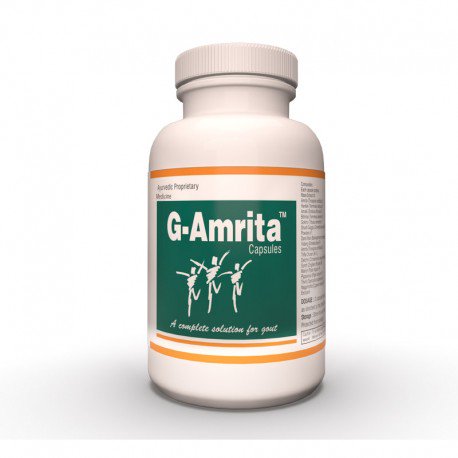
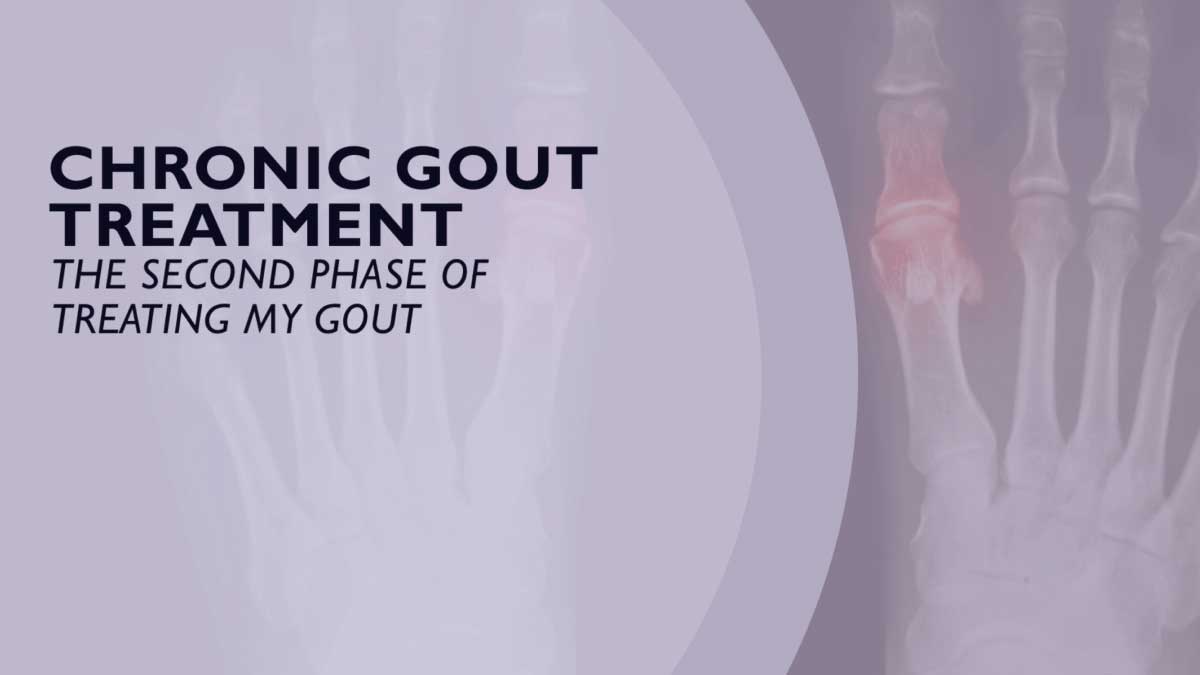

 ”
”
 You take steroids by mouth or with an injection.
You take steroids by mouth or with an injection.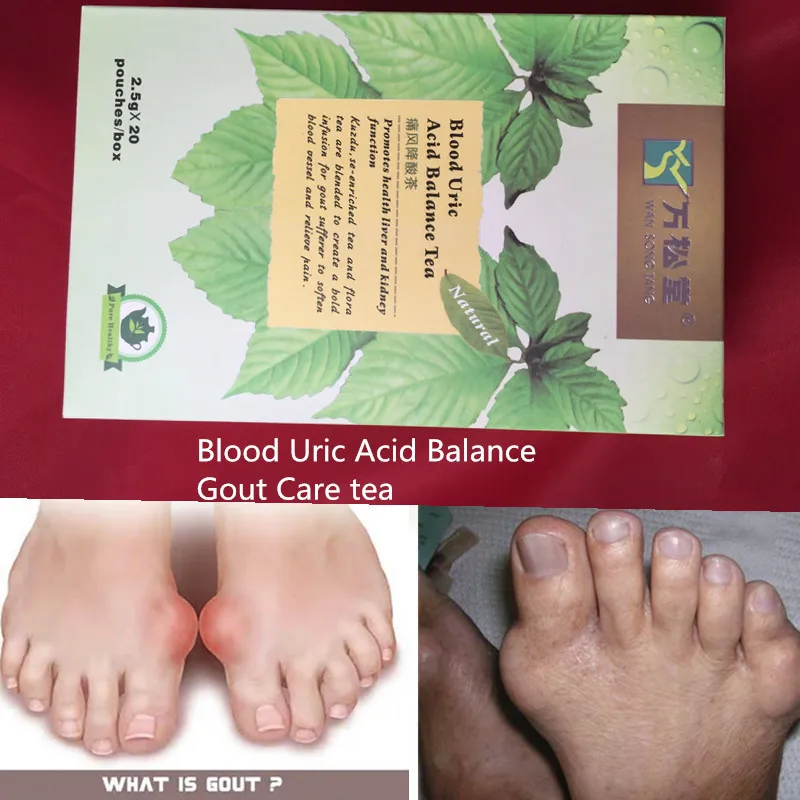
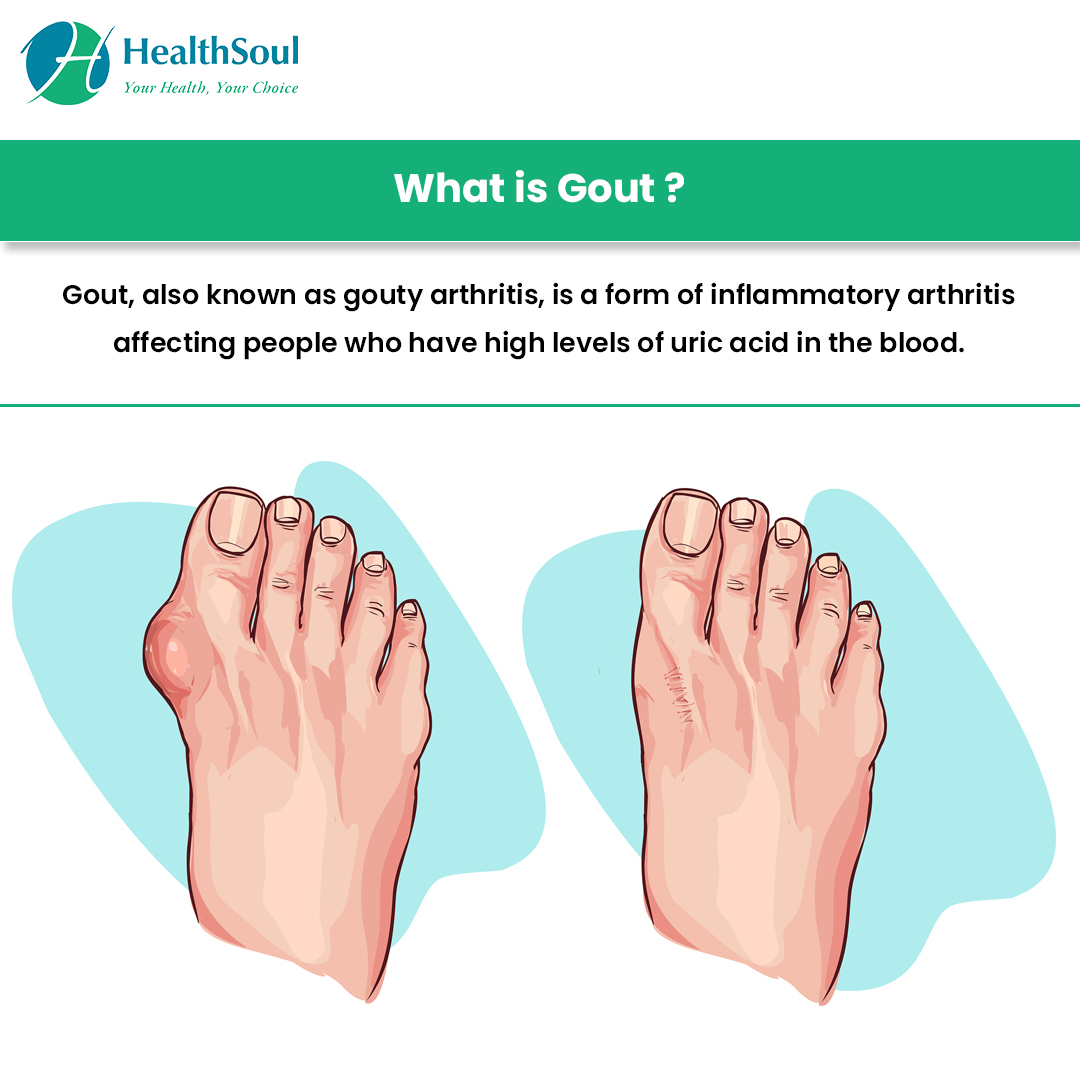


 For gout, ibuprofen-based drugs are optimal. The specific drug and the method of its use are also prescribed only by the doctor, taking into account the concomitant diseases.
For gout, ibuprofen-based drugs are optimal. The specific drug and the method of its use are also prescribed only by the doctor, taking into account the concomitant diseases.

 Patients with renal impairment need a dose adjustment of this drug.
Patients with renal impairment need a dose adjustment of this drug.